Concluded Projects
For some projects, information is only available in German. Please consult the German-language pages for more information.
1848 – Lived Revolution
Diary of a Viennese Jew (German with Hebrew Letters)
Since 2003, the library of the Melk Abbey has been holding a precious rarity: a diary covering the time between 27. August 1848 and 31. May 1850, written by an – at this point – unknown Viennese Jew.
The diary was „found“ at the waste disposal site for recyclables of Bad Zell in Upper Austria: an attentive employee had pulled the inconspicuous volume from a waste heap. Unfortunately, another eight (!) books were irretrievably lost. The book eventually came into the property of Father Gottfried Glaßner from the abbey of Melk, and was integrated into the manuscript collection of the abbey's library as „Codex 1516“. Clean Hebrew italics, tightly crammed onto 368 pages show the use of the orthography typical for the High German language of the early 18th century.
The diary's author, who has been identified as Benjamin Bernhard Kewall from Polna/Bohemia offers an extensive description, enabling a new view on lived history of the events in Vienna in 1848. The author witnessed the revolution literally on his doorstep, on Jaegerzeile (today Praterstraße) and was well-informed – certainly also due to his profession as private teacher and journalist. The author and his descriptions take us through the city to the Parliament building (to listen to political speeches), to cafés (where the dissenters met) and quite often to the theatre (apparently his most favourite past-time).
Benjamin Bernhard Kewall offers a multi-layered insight into Vienna's society which consisted of revolutionary students and blue-collar workers, uniformed women and intimidated clerks as well as – politically speaking – black-yellow and red citizens, the „redcoats“ of Jellacic and the revolutionary National Guard, etc. His records reflect the opinions and convictions of a liberal Jew and journalist in revolutionary times. The author's Jewry was visible mainly at celebrations of Passover and other high feasts and in confrontation with growing anti-Semitism.
This project looked at the „Lebenswelten“ (living worlds) of the diary's author as well as his historic descriptions and individual perspectives. So far, a Jewish point of view on the happenings and outcome of the revolution of 1848 had been restricted due to a lack of sources. The publication of this personal viewpoint thus offers a partly new and certainly widened approach. The publication contains the facsimile and transcription of the source, its text-critical analysis as well as a biographic overview.
We would like to express our thanks to the abbey of Melk for its support of this project.
Information: |mail: Wolfgang Gasser|
Radio award for the radio programme |Der Freiheit eine Gasse. Der Wiener Journalist Benjamin Kewall und sein Revolutionstagebuch aus dem Jahr 1848| by Günter Kaindlstorfer.
Publications
Wolfgang Gasser, Erlebte Revolution 1848/49. Das Tagebuch des Wiener jüdischen Journalisten Benjamin Kewall. Unter Mitarbeit von Gottfried Glaßner (Quelleneditionen des Instituts für Österreichische Geschichtsforschung, Bd. 3). Oldenbourg Verlag, Wien-München 2010. 540 S., ISBN 978-3-486-58939-9.
|Review|
Wolfgang Gasser, „Ich bin mitten in eine gewaltige zeitgeschichtliche Bewegung versetzt worden...“ – Vier politische Tagebücher aus der Wiener 1848er-Revolution. In: Anna Mitgutsch, Wolfgang Gasser, Claudia Lehner, Petra-Maria Dallinger, Tagebücher. Aufzeichnungen aus bewegten Zeiten. Publikation des Stifterhauses, Zentrum für Literatur und Sprache in Oberösterreich. Linz 2009, S. 18–51.
Ders., Analyse zum Tagebuch von Benjamin Kewall aus der Wiener Revolution 1848/49 in 2 Bänden. Phil. Diss. Universität Wien 2009.
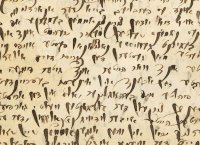
Austria Judaica
The project „Austria Judaica“, financed by the FWF, has since 1998 researched the history of Jews in the Austrian countries from 1520 until the expulsion of all Jews from Vienna and Lower Austria in 1670/71.
It directly connected to the tradition of the research project „Germania Judaica“ which had been founded in Berlin in 1903 by the Centre for Research in Jewish History (Gesellschaft zur Förderung der Wissenschaft des Judentums) and is today located at the University of Düsseldorf and the Hebrew University in Jerusalem.
The project Austria Judaica aimed at researching all aspects of Jewish existence in early modern Austria using a broad variety of sources and including inner-Jewish development as well as the relationship between Jews and their Christian surroundings. The topics thus reaches from aspects of settlement, legal position and economic activities of the Jews to questions regarding the history of gender, crime and genealogy. Additional topics included the structure and functioning of inner-Jewish organisations on the levels of provincial communities and rural Jews, culture, piousness as well as the general Jewish-Christian co-existence in town- and village-communities. The Jewish community in the royal capital of Vienna with its manifold economic and family connections to other Jewish centres in Central and Central Eastern Europe is of special importance.
Extensive sources from numerous Austrian archives which had been collected over a number of years and which have been in part entered into a databank are used as a basis for the research of the Austria Judaica. Geographically, the project focused especially on the Jewish community of Vienna as well as on the rural Jews of Lower Austria who have been sorely neglected by research.
From 1998 – 2003 „Bohemia, Moravia et Silesia Judaica“, a cooperation project of „Austria Judaica“ financed by the Federal Ministry for Education, Science and Culture, aimed at researching the relationship between Austrian and Bohemian-Moravian Jews. The numerous materials, which had been collected and only partly analysed, are now being entered into the databank and considerably increase the research basis for future analyses.
In connection with the partner project „Hungaria et Slovakia Judaica“ which had been financed by the "Hochschuljubiläumsfonds" of the Austrian National Bank, especially Hungarian sources could be collected from 2000 – 2002.
Information: |mail: Sabine Hödl|
Publications
Austria Judaica. Quellen zur Geschichte der Juden in Niederösterreich und Wien 1496–1671. Bearbeitet von Peter Rauscher unter Mitarbeit von Barbara Staudinger. Mit einem Beitrag von Martha Keil. Quelleneditionen des Instituts für Österreichische Geschichtsforschung, Band 7. Böhlau–Oldenbourg, Wien–München 2011.
Barbara Staudinger: Gemeinsame Geschäfte. Jüdinnen als Ehe- und Handelsfrauen und ihre Wahrnehmung in der Frühen Neuzeit. In: Monika Mommertz, Claudia Opitz-Belakhal (Hrsg.), Das Geschlecht des Glaubens. Religiöse Kulturen Europas zwischen Mittelalter und Moderne. Frankfurt/Main, New York 2008, S. 98–122
Peter Rauscher, Barbara Staudinger: Räume und Wege. Jüdische Geschichte im Alten Reich 1300–1800. Berlin 2007 (Colloquia Augustana 25) (gem. mit Rolf Kießling und Stefan Rohrbacher).
Barbara Staudinger: Innerjüdische Organisationsformen. Die niederösterreichischen Juden zwischen Gemeinde und Landjudenschaft. In: Rolf Kießling, Stefan Rohrbacher, Peter Rauscher, Barbara Staudinger (Hrsg.), Räume und Wege. Jüdische Geschichte im Alten Reich 1300–1800 Berlin 2007 (Colloquia Augustana 25), S. 145–167.
Barbara Staudinger: Nur am Rande der Gesellschaft? Die jüdische Minderheit zwischen Abgrenzung und Integration im frühneuzeitlichen Österreich. In: Eveline Brugger, Birgit Wiedl (Hrsg.), Ein Thema – zwei Perspektiven. Juden und Christen in Mittelalter und Frühneuzeit. Innsbruck 2007, S. 67–89. |Download|
Barbara Staudinger: Geschichte der Juden in Österreich (gem. mit Martha Keil, Eveline Brugger, Christoph Lind und Albert Lichtblau). Wien 2006 (Österreichische Geschichte).
Barbara Staudinger: In puncto Debiti – Jüdische Geldleiherinnen am Reichshofrat. In: Siegrid Westphal (Hrsg.), In eigener Sache. Frauen vor den höchsten Gerichten des Alten Reiches. Köln–Weimar–Wien 2005, S. 153-180.
Barbara Staudinger: Ritualmord und Schuldklage. Prozesse fränkischer Juden vor dem Reichshofrat im 16. und 17. Jahrhundert. In: Gerhard Taddey (Hrsg.), ... geschützt, geduldet, gleichberechtigt ... Die Juden im baden-württembergischen Franken vom 17. Jahrhundert bis zum Ende des Kaiserreichs (1918). Ostfildern 2005 (Forschungen aus Württembergisch Franken 52), S. 47–59.
Barbara Staudinger: Eine Frage der Ehre. Beschimpfungen zwischen Christen und Juden in der Frühen Neuzeit. In: Nicht in einem Bett. Juden und Christen in Mittelalter und Frühneuzeit. Juden in Mitteleuropa 2005, S. 58–65. |Download|
Peter Rauscher: Ein dreigeteilter Ort: Die Wiener Juden und ihre Beziehungen zu Kaiserhof und Stadt in der Zeit des Ghettos (1625–1670). In: Susanne Claudine Pils - Jan Paul Niederkorn (Hgg.), Ein zweigeteilter Ort? Hof und Stadt in der Frühen Neuzeit (= Forschungen und Beiträge zur Wiener Stadtgeschichte, Bd. 44), Innsbruck-Wien-Bozen 2005, S. 87–120.
Peter Rauscher: 150 Jahre jüdisches Leben in Österreich. Das Forschungsprojekt Austria Judaica des Instituts für Geschichte der Juden in Österreich (1998–2005). In: Frühneuzeit-Info 16 (2005), S. 81–86.
Barbara Staudinger: „Gantze Dörffer voll Juden.“ Juden in Niederösterreich 1496–1670. (Geschichte der Juden in Niederösterreich von den Anfängen bis 1945, Bd.2, hrsg. Vom Institut für Geschichte der Juden in Österreich). Mandelbaum Verlag, Wien 2005, 385 S.
Peter Rauscher: Langenlois – Eine jüdische Landgemeinde in Niederösterreich im Zeitalter des Dreißigjährigen Kriegs (= Schriftenreihe des Waldviertler Heimatbundes 44). Horn – Waidhofen an der Thaya 2004. 184 S. Bestelladresse: Waldviertler Heimatbund, A-3580 Horn, Postfach 1, Austria.
Barbara Staudinger: Das Judentum im frühneuzeitlichen Europa. Beitrag zum Webprojekt „66 Jahre – eine Zeitenwende“ von pastperfect an der Universität Wien.
Barbara Staudinger: Die Reichshofratsakten als Quelle zur Geschichte der österreichischen und böhmischen Länder im 16. und 17. Jahrhundert. In: Josef Pauser, Martin Scheutz, Thomas Winkelbauer (Hgg.), Quellenkunde der Habsburgermonarchie (16.–18. Jahrhundert). Ein exemplarisches Handbuch. Wien - München 2004 (Mitteilungen des Instituts für Österreichische Geschichtsforschung, Erg. Bd. 44), S. 327–336.
Barbara Staudinger: „Gelangt an eur kayserliche Majestät mein allerunderthenigistes Bitten“. Handlungsstrategien der jüdischen Elite am Reichshofrat im 16. und 17. Jahrhundert. In: Sabine Hödl, Peter Rauscher, Barbara Staudinger (Hgg.), Hofjuden und Landjuden. Jüdisches Leben in der Frühen Neuzeit. Berlin–Wien 2004, S. 143–183.
Barbara Staudinger: Juden als „Pariavolk“ oder „Randgruppe“? Bemerkungen zu Darstellungsmodellen des christlich-jüdischen Verhältnisses in der Frühen Neuzeit. In: Margareth Lanzinger, Martin Scheutz (Hgg.), Normierte Lebenswelten. Wiener Zeitschrift zur Geschichte der Neuzeit 4/1 (2004), S. 8–25.
Barbara Staudinger. Die Resolutionsprotokolle des Reichshofrates (RHR). In: |zeitenblicke| 3 (2004), Nr. 3, [13.12.2004]
Barbara Staudinger: „Gantze Dörffer voll Juden“. Zur Geschichte der Juden in Niederösterreich 1496–1670/71. In: |David. Jüdische Kulturzeitschrift|, Nr. 63 (2004), S. 19–22.
Barbara Staudinger: Widerspenstige Kammerknechte. Die kaiserlichen Maßnahmen zur Erhebung von „Kronsteuer“ und „Goldenem Opferpfennig“ in der Frühen Neuzeit. In: Aschkenas. Zeitschrift für Geschichte und Kultur der Juden 14 (2004), S. 313–363 (gem. mit Peter Rauscher).
Sabine Hödl, Peter Rauscher, Barbara Staudinger (Hg.): Hofjuden und Landjuden. Jüdisches Leben in der Frühen Neuzeit. Berlin, Wien 2004. Philo Verlag. 399 S. |Download|
Barbara Staudinger: Die Reichshofratsakten als Quelle zur Geschichte der österreichischen und böhmischen Länder im 16. und 17. Jahrhundert. In: Josef Pauser, Martin Scheutz, Thomas Winkelbauer (Hgg.), Quellenkunde der Habsburgermonarchie (16.–18. Jahrhundert). Ein exemplarisches Handbuch. Wien – München 2004 (Mitteilungen des Instituts für Österreichische Geschichtsforschung, Erg. Bd. 44), S. 327–336.
Barbara Staudinger: Juden als „Pariavolk“ oder „Randgruppe“? Bemerkungen zur Darstellungsmodellen des christlich-jüdischen Verhältnisses in der Frühen Neuzeit. In: Margareth Lanzinger, Martin Scheutz (Hgg.), Normierte Lebenswelten. Wiener Zeitschrift zur Geschichte der Neuzeit 4/1 (2004), S. 8–25.
Sabine Hödl, Barbara Staudinger: „Ob mans nicht bei den juden ... leichter und wolfailer bekommen müege“. Juden in den habsburgischen Ländern als kaiserliche Kreditgeber (1520–1620). In: Friedrich Edelmayer, Maximilian Lanzinner, Peter Rauscher (Hrsg.), Finanzen und Herrschaft. Materielle Grundlagen fürstlicher Politik in den habsburgischen Ländern und im Heiligen Römischen Reich im 16. Jahrhundert. Wien-München 2003 (Veröffentlichungen des Institut für Österreichische Geschichtsforschung 38), S. 246–269.
Barbara Staudinger: Von den Rechtsnormen zur Rechtspraxis. Eine Stellungnahme zu einem Forschungsvorhaben zur Rechtsgeschichte der Juden im Heiligen Römischen Reich. In: Aschkenas 13/1 (2003), S. 107–115.
Barbara Staudinger: Die Resolutionsprotokolle des Reichshofrats als Quelle zur jüdischen Geschichte. In: Anette Baumann, u. a. (Hrsg.), Prozeßakten als Quelle. Neue Ansätze zur Erforschung der Höchsten Gerichtsbarkeit im Alten Reich. Köln-Weimar-Wien 2001, S. 119–140.
Barbara Staudinger: „Auß sonderbaren khayserlichen gnaden“. Die Privilegien der Wiener Hofjuden im 16. und 17. Jahrhundert. In: Frühneuzeit-Info 12/1 (2001), S. 21–39.
Barbara Staudinger: Juden am Reichshofrat. Jüdische Rechtsstellung und Judenfeindschaft am Beispiel der österreichischen, böhmischen und mährischen Juden 1559–1670. Ungedr. phil. Diss., Wien 2001.
Lydia Gröbl: „... auf wolgefallen..., doch das er sich also der gebüer nach verhalte...“. Juden in Stein im 17. Jahrhundert. In: Unsere Heimat. Zeitschrift für Landeskunde von Niederösterreich 71/4 (2000), S. 268–278.
Lydia Gröbl, Sabine Hödl, Barbara Staudinger: Steuern, Privilegien und Konflikte. Rechtsstellung und Handlungsspielräume der Wiener Juden von 1620 bis 1640. Quellen zur jüdischen Geschichte aus den Beständen des Österreichischen Staatsarchivs. In: Mitteilungen des Österreichischen Staatsarchivs 48 (2000), 147–195.
Lydia Gröbl, Sabine Hödl, Barbara Staudinger: Austria Judaica. Die Geschichte der Juden in Österreich von 1520 bis 1670. Projektbericht. In: Mitteilungen des Instituts für Österreichische Geschichtsforschung 108/1–2 (2000), S. 139–143.
Lydia Gröbl, Sabine Hödl, Barbara Staudinger: Projekt Austria Judaica. In: Aschkenas – Zeitschrift für Geschichte und Kultur der Juden 9/2 (1999), S. 587–589.
Sabine Hödl: Die Privatbriefe von Prager an Wiener Juden (1619) als familienhistorische Quelle. In: Sabine Hödl, Martha Keil (Hgg.), Die jüdische Familie in Geschichte und Gegenwart. Bodenheim 1999, S. 51–77.
Sabine Hödl: Zur Geschichte der Juden in Österreich unter der Enns. 1550–1625. Ungedr. phil. Diss. Wien 1998.
Sabine Hödl: ... dem gemeinen Mann überal zu Verderben und menniglich zu unleidenlichen Beschwarungen ... Studien zur Judenfeindschaft in Österreich von 1496 bis 1620. In: Martha Keil - Eleonore Lappin (Hg.), Studien zur Geschichte der Juden in Österreich. Bodenheim 1997 (Handbuch zur Geschichte der Juden in Österreich, Reihe B, Bd. 3), S. 35–64.
Sabine Hödl: Eine Suche nach jüdischen Zeugnissen in einer Zeit ohne Juden. Zur Geschichte der Juden in Niederösterreich von 1420 bis 1555. In: Mitteilungen des Österreichischen Staatsarchivs 45 (1997), S. 271–296. |Online|
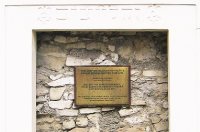
Business Life and Women's rights
The economic, legal and socio-religious situation of Jewish and Christian women in Austria, Croatia and the Czech Republic (13th – 16th centuries)
In their various and differing geographical actualities, Austria, Croatia and the Czech Republic were important trade centres during the late Middle Ages and the early modern times. The different professions of trade and money lending offered women within the Christian and Jewish societies a number of business activities; they had their own money at their disposal, took on their husbands' tasks on their absence or death and continued to run businesses independently or in a consortium.
This project focus was which political, economical and social conditions enabled women to act as individual legal personalities and as business people. It answered the question how women were able to use their power within their collective beyond the bounds of their sexual attributes – be they religious (Jewish community or cloister), economical (family-owned enterprise or guild), social (bourgeoisie, aristocracy or Jewish upper class) or political (town).
An additional aim was the research of simultaneous inclusions and exclusions: which spheres opened up to women due to their business activities, which spheres closed on them? Did this development stand in connection with other phenomena? How far did religious developments or political events such as war or expulsions make a difference? The period of time looked at reached from the 13th to the 16th centuries, as all three countries offer numerous and varied Jewish and Christian sources.
Information: |mail: Martha Keil|
This project was part of the programme „Connex II“ financed by the Federal Ministry of Science and Research</a>
Publications
Martha Keil (Hrsg.), Besitz, Geschäft und Frauenrechte. Jüdische und christliche Frauen in Dalmatien und Prag 1300–1600. Kiel, Solivagus Verlag 2011
Dies., Besitz, Geschäft und Frauenrechte. Jüdische und christliche Frauen in Dalmatien und Prag 1300–1600. Zur Einführung. In: Martha Keil (Hg.), Besitz, Geschäft und Frauenrechte. Jüdische und christliche Frauen in Dalmatien und Prag 1300-1600. Solivagus Verlag, Kiel 2011, S. 9–22
Dies., Geschäftsleben und Frauenrechte: die wirtschaftliche, rechtliche und sozio-religiöse Lage jüdischer und christlicher Frauen in Österreich, Kroatien und der Tschechischen Republik (13. bis 16. Jhdt.). Ein Werkstattbericht. In: Eveline Brugger, Birgit Wiedl (Hrsg.), Ein Thema – zwei Perspektiven, Juden und Christen in Mittelalter und Frühneuzeit. Innsbruck, Wien, Bozen 2007), S. 307–317. |Download|
Dies., Women Bankers. In: Encyclopaedia Judaica Vol. 3, Art. Banking and Bankers, 2. Aufl. Jerusalem 2006, S. 115.
Dies., Female Family Members. In: Encyclopaedia Judaica, Vol. 10, Art. Isserlein, Israel ben Pethahiah. 2. Aufl. Jerusalem 2006, S. 769f.
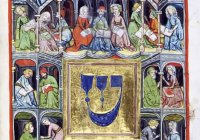
„Closed“ Institution?
The Psychiatric Hospital Mauer-Öhling (Lower Austria) during National Socialism and in Collective Memory
|Sparkling Science-Projekt|
Project history and results
For two years, from August 1, 2017 to July 31, 2019, the Sparkling Science-Project enabled the study of a particularly repressed chapter of Austrian history: the „Euthanasia” Murder in the Psychiatric Hospital Mauer-Öhling, today Landesklinikum Mauer. The research question was, in which ways and by which actors the knowledge about the in-patient crimes could penetrate from the „closed” institution and whether this knowledge had left traces in the family and collective memory to this day. With this key question, a scholarly school project, which initially met with resistance in the region, led to an exemplary examination of a repressed chapter in the regional history of Amstetten and beyond. The driving force of this social change was the exemplary commitment of the partner school and the City of Amstetten.
About 2,800 patients were electrocuted inside the hospital, poisoned, neglected and starved to death or deported to Hartheim and Gugging for extermination. All categories of killings were known during the events and after the war: Project employee Philipp Mettauer was able to reconstruct how well staff, relatives, and even patients themselves knew about the inmates’ murders and deportations in using the personal files, the court files of the trial of the doctors and carers accused of murder and aiding in June 1948, and various written and oral testimonies of contemporary witnesses. City archivist Thomas Buchner was able to prove on the basis of contemporary media reports that the general public was also informed. As with other crimes committed in the Nazi era the analysis of events was stopped and suppressed in the post-war years.
Research of the pupils
The altogether 45 pupils from two classes of the „Aufbaulehrgangs Wirtschaft” (ALW) of the technical college Amstetten aged 17 to 19 had two task areas: One group reconstructed three life stories of victims from the medical records and interviews with relatives and corrected the veiled causes of death as indicated in the official medical history. The second group interviewed relatives of the murdered, descendants of convicted carers and public figures of today on family and collective knowledge in nine interviews. Out of this interview material, five students voluntarily shot the half-hour documentary “Wall of Silence” outside school hours.
All participants received a profound introduction to historical work techniques and visited the Lower Austrian State Archives as well as the mass graves at the institutions cemetery. The examination of this stressful topic was sensitively accompanied by the teachers and the School Psychological Service Amstetten. The positive effect was that talking about the project promoted family communication and strengthened cohesion within the classroom.
Materialized research results
The scientific results of the project secured the basis for a monument to the victims of the hospital, with which the department of „Art on Building” of Lower Austria commissioned Florian Nährer, an artist from St. Pölten. The unveiling of this so-called „Himmelstreppe" on May 8, 2019, immediately after the presentation of the project results by the team of historians and students underlined the public relevance of their research work. With the completion of the project, the work is not over. Already during the course of the project, people who either already carried out private research or were interested in collaborating came forward. They and other interested parties will be included in the following Top Citizen Science-Project| Names, Graves and Memory. The Psychiatric Hospital Mauer-Öhling (Lower Austria) during National Socialism|. The aim is a memorial for all victims of the Psychiatric Hospiatl Mauer-Öhling.
Lead Organisation
Institut für jüdische Geschichte Österreichs (INJOEST):
|mail: PD Dr. Martha Keil; ||mail: Dr. Wolfgang Gasser|, |mail: Dr. Philipp Mettauer|, |mail: Tina Frischmann|
School
|Aufbaulehrgang Wirtschaft (ALW) der Fachschule Amstetten, Lehrgang Gesundheit und Soziales|
Scientific Cooperation
|Niederösterreichisches Landesarchiv (NÖLA)|
|Stadtarchiv Amstetten|
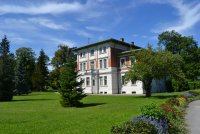
The Psychiatric Hospital Mauer-Öhling (Lower Austria) during National Socialism
In cooperation with: |Niederösterreichisches Landesarchiv |
At least 30,000 people were classified during the National Socialist era in Austria as „unworthy life” and murdered in the context of Nazi „Euthanasia”. Founded in 1902, the “Kaiser-Franz-Joseph-Landes-Heil- und Pflegeanstalt” Mauer-Öhling was with its approximately 2,000 beds after the Wiener Steinhof and the Grazer Feldhof the third largest clinic in Austria, which was involved in the murder of psychiatric patients in the National Socialist system. From the „Heil- und Pflegeanstalt” Mauer-Öhling a total of 30.400 medical records of the years 1902-1977 have been preserved in the Lower Austrian Provincial Archives and are now recorded systematically in a database with name, date of birth and death or „departure”, place of origin, gender, religious confession and diagnosis of the patients.
Of these, 3.840 are from the Nazi period, the records date from 12 March 1938 to 8 May 1945. It should be noted that in the recorded stock only the deceased, dismissed, the few successful fugitives and the survivors, who were still in the hospital in 1977, are present. The deportees on the death transports to Hartheim (around 1,300), Gugging (around 300) and Linz-Waldegg (at least 20) are not included because they their case histories where given with them on the deportations. In the NÖLA only a few copies of the cover sheets are available from these cases.
The people were exterminated and cremated, their files archived for later „genetic analysis” in the „Central Service” in Tiergartenstraße 4, Berlin. Through detours some of these case histories came under the stock name R 179 in the Federal Archives of Berlin. In the summer of 2018, this archive put a total of 30,000 names of victims of Nazi „Euthanasia” online for research, including 520 from the Mauer-Öhling.
After the end of the „Campaign T4” the termination of patients continued internally by means of overdosed drugs, injections, withdrawal of food and a converted electric-shock device until the end of the war. Since September 1944 Mauer-Öhling also acted as a „collection point” for „incurably mentally ill eastern workers and Poles”. If their ability to work could not be restored as quickly as possible, they were either killed in the institution itself or deported to the extermination centers. The publication of the basic research results and the results of the long-term archival research in a comprehensive monograph is in preparation. On the expanded part of the hospitals cemetery – now an empty area without any reference to the historical significance – the victims of the last murder action of 1944/45 are buried. Their fate is explored in detail in the ongoing Top Citizen Science-Project |Names, Graves and Memory| in cooperation with the city of Amstetten. Together with the State Clinic Mauer there will be found a way for a dignified design of the site.
Information:|mail: Philipp Mettauer|
We thank the Province of Lower Austria for supporting the project!
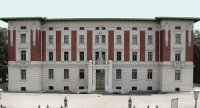
Hungarian-Jewish Slave Laborers
in Austria in 1944–45: Forced Labor, Death Marches and How Austria‘s Second Republic Dealt with This Part of the Past
After the German Wehrmacht occupied Hungary in March 1944, app. 60,000 Hungarian Jews were abducted as slave laborers to the territory of present-day Austria. Some of the deportees were sent on to concentration camps elsewhere in the Third Reich; tens of thousands remained in Austria, where they were used as forced laborers.
This project dealt with those Hungarian Jews who were enslaved not behind the barbed-wire fences of concentration camps but rather in plants and on farms, or in constructing the so-called „southeastern rampart“ (Südostwall) along the Hungarian-Austrian border. The inhuman living and working conditions under which they suffered did not escape the attention of Austria's civilian population. Reactions to this suffering varied from apathy to verbal assaults; some even went as far as providing aid.
In the spring of 1945, Jewish slave laborers were driven on death marches through Vienna, Lower Austria, Burgenland, Styria and Upper Austria to the concentration camps in Mauthausen and Gunskirchen. The guard details were ordered to shoot the weak, the sick and those attempting to escape. There were also massacres committed by the SA and SS, local militiamen (Volkssturm) and police units. Many of these atrocities were also witnessed by civilians.
These violent crimes were tried both by postwar Austrian People's Courts in Vienna, Graz, and Linz, as well as by British Military Government Courts in Styria in 1946–47. By the late '40s, the interest in punishing Nazi crimes was already diminishing markedly; nevertheless, there were a considerable number of guilty verdicts, some of which resulted in stiff punishments, although many of those convicted were already being amnestied in the ‘50s. The 1960‘s saw scandalous acquittals of Nazi Perpetrators. The crimes as well as the judicial punishment of them were soon forgotten.
The Republic of Austria long refused responsibility for the graves of the tens of thousands of Hungarian Jews murdered in Austria. Commemorative plaques and monuments are few and, as a rule, can be traced back to the initiatives of private organizations. However, such efforts, which began in the mid-'60s and intensified in the ‘80s, constitute clear signs of improved relations between Jews and non-Jews in Austria. (Eleonore Lappin-Eppel)
Information: |mail: Injoest|
Cooperation: |Verein zur Erforschung nationalsozialistischer Gewaltverbrechen und ihrer Aufarbeitung|
We are thankful for the support provided by the |Austrian Science Fund| as well as the Jubilee Fund of the Austrian National Bank.
Look also at |Projekt Mahnmal Viehofen|.
|Grabstätte der Opfer des Massakers von Hofamt Priel im Mai 1945| (Tombstone for the victims of the massacre of Hofamt Priel in May 1945)
Publications
Eleonore Lappin-Eppel, Ungarisch-jüdische Zwangsarbeiter und Zwangsarbeiterinnen in Österreich 1944/45: Arbeitseinsatz – Todesmärsche – Folgen (Forschung und Wissenschaft – Geschichte, Bd. 3). Münster – Berlin – Wien 2010
Eleonore Lappin-Eppel, Das Massaker von Rechnitz im historischen Kontext. In: Gregor Holzinger, Jakob Perschy, Dieter Szorger (Red.), Das Drama Südostwall am Beispiel Rechnitz. Daten, Fakten, Folgen (Burgenländisches Landesarchiv (Hg.), Burgenländische Forschungen Bd. 98), Eisenstadt 2009, S. 11–19.
Dies., Sonderlager für ungarisch-jüdische Zwangsarbeiter. In: Wolfgang Benz und Barbara Distel (Hg.), Der Ort des Terrors. Geschichte der nationalsozialistischen Konzentrationslager, Bd. 9, Arbeitserziehungslager, Ghettos, Jugendschutzlager, Polizeihaftlager, Sonderlager, Zigeunerlager, Zwangsarbeiterlager, München 2009, S. 218-247.
Eleonore Lappin, Tarnname „Linz“. |Download|
Dies., Perceptions of Suffering and Survival in Testimonies of Hungarian Jewish Slave Labourers in Austria (1944/45). In: Johannes Dieter Steinert, Inge Weber-Newth (Ed.), Beyond Camps and Forced Labour – 60 Years On. Current International Research on Survivors of Nazi Persecution. London 2008, S. 283–294.
Dies., Zwangsarbeit ungarischer Juden in Österreich 1944/45 und die Todesmärsche im Frühjahr 1945. In: David 76 (2008), S. 54–62.
Dies., Strukturen der Verantwortung. Volksgerichtsverfahren wegen Verbrechen gegen ungarische Juden in österreichischen Zwangsarbeitslagern des Sondereinsatzkommandos der Sicherheitspolizei und des SD in Ungarn, Außenkommando Wien. In: Zeitgeschichte 6 (2007), S. 351–371.
Dies., Gräber ohne Namen. Grabstätten ungarischer Jüdinnen und Juden in Niederösterreich. In: Martha Keil, Elke Forisch, Ernst Scheiber (Hg.), Denkmale. Jüdische Friedhöfe in Wien, Niederösterreich und Burgenland, Wien 2006, S. 134–141.
Dies., Ungarische Juden in Niederösterreich 1944/45. In: Eleonore Lappin, Susanne Uslu-Pauer und Manfred Wieninger, Ungarisch-jüdische Zwangsarbeiterinnen und Zwangsarbeiter in Niederösterreich 1944/45 (= Studien und Forschungen aus dem niederösterreichischen Institut für Landeskunde Band 45, herausgegeben von Willibald Rosner und Reinelde Motz-Linhart), St. Pölten 2006, S. 11-102. Darin die Artikel: Das Massaker von Hofamt Priel, S. 103–132.Die Opfer von Hofamt Priel - Namen, Tagebücher und autobiographische Berichte (Edition), S. 133–173.
Dies., Ungarische Jüdinnen und Juden in Theresienstadt. Das Schicksal „privilegierter“ jüdischer Arbeitssklav/innen. In: Jaroslava Milotová, Michael Wögerbauer, Theresienstädter Studien und Dokumente 2005, S. 150–165.
Dies., Mad'arsti Zide v Terezine. Osud „privilagovanych“ pracovnich otrokú. In: Jaroslava Milotová (Hg.), Terezínské Studie a Dokumenty 2005, S. 136–150.
Dies., Zwangsarbeiter/innen und Helfer/innen in Gmünd und Weitra. In: Christian Gmeiner, Eleonore Lappin (Hg.), Shatil. Intervention in die Erinnerungskultur des Waldviertels. Ehrungen von Lebensrettern/innen aus dem Jahr 1945, 17 S.
Dies., Der Todesmarsch ungarischer Jüdinnen und Juden von Ungarn nach Mauthausen im zeitgeschichtlichen Kontext. In: Heimo Halbrainer, Christian Ehetreiber (Hg.), Todesmarsch Eisenstraße 1945. Terror, Handlungsspielräume, Erinnerung: Menschliches Handeln unter Zwangsbedingungen, Graz 2005, S. 59–94.
Dies., Die Todesmärsche ungarischer Juden durch Österreich im Frühjahr 1945. |Download|
Dies., Todesmärsche durch den Gau Oberdonau. In: Siegfried Haider und Gerhard Marckhgott (Red.), Oberösterreichische Gedenkstätten für KZ-Opfer, Linz 2001, S. 77–92.
Dies., Die Todesmärsche ungarischer Juden nach Mauthausen und Gunskirchen. In: |Mauthausen Memorial|
Dies., Die Ahndung von NS-Gewaltverbrechen im Zuge der Todesmärsche ungarischer Juden durch die Steiermark. In: Winfried Garscha, Claudia Kuretsidis (Hrsg.), Keine Abrechnung. Wien 1998, S. 32–53.
Dies., Opfer als Zeugen in Gerichtsverfahren wegen nationalsozialistischer Gewaltverbrechen: Ein unterbliebener Opfer-Täter-Diskurs. In: Gertraud Diendorfer/Gerhard Jagschitz/Oliver Rathkolb (Hrsg.), Zeitgeschichte im Wandel. 3. Österreichische Zeitgeschichtetage 1997, Innsbruck, Wien, 1998, S. 330–336.
Dies., Ungarisch-jüdische Zwangsarbeiter in Österreich 1944/45. In: Martha Keil, Eleonore Lappin (Hrsg.), Studien zur Geschichte der Juden in Österreich, Bd. 2. Bodenheim/Mainz 1997, S. 141–168.
Dies., Prozesse der britischen Militärgerichte wegen nationalsozialistischer Gewaltverbrechen an ungarisch-jüdischen Zwangsarbeitern in der Steiermark. In: Rudolf G. Ardelt, Christian Gerbel (Hrsg.), Österreichischer Zeitgeschichtetag 1995, Innsbruck-Wien 1997, S. 345–350.
Dies., Der Weg ungarischer Juden nach Theresienstadt. In: Theresienstädter Studien und Dokumente 1996, S. 52–81.
Dies., Ungarisch-jüdische Zwangsarbeiter in Wien 1944/45. In: Martha Keil, Klaus Lohrmann (Hrsg.), Studien zur Geschichte der Juden in Österreich, Bd. 1. Wien-Köln 1994, S. 140–165.
Dies., Rechnitz gedenkt der Opfer der NS-Herrschaft. In: Jahrbuch des Dokumentationsarchivs des österreichischen Widerstandes (1992), S. 50–70.
Günther Burczik, „Nur net dran rührn!“ Auf den Spuren der Todesmärsche ungarischer Juden durch Österreich nach Mauthausen im April 1945. Martha Keil, Eleonore Lappin (Hrsg.), Studien zur Geschichte der Juden in Österreich, Bd. 2. Philo-Verlag, Bodenheim/Mainz 1997, S. 169–204.
Benedikt Friedmann, Iwan, hau' die Juden! Die Todesmärsche ungarischer Juden durch Österreich nach Mauthausen im Frühjahr 1945. Hrsg. vom Institut für Geschichte der Juden in Österreich. Augenzeugen berichten, Heft 1, St. Pölten 1989.
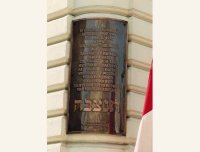
The Jewish community in St. Pölten
(c. 1850 to the present)
From 1996 to 2002 a team from the Institute (Martha Keil, Matthias Lackenberger, Eleonore Lappin, Christoph Lind) conducted research on the Jewish community in St. Pölten from its beginnings around 1850 until its destruction in 1940. Before 1938 the community had 1,200 members and 400 Jews lived in the city itself.
Around one quarter of the Jewish population-310 persons have been identified to date-were killed by the Nazis; there names are engraved for ever on a memorial in front of the synagogue and an installation inside. Only three families returned to their home town after the war and there are just two Jews in St. Pölten today.
Although the damaged synagogue, restored to its original form, was reopened in 1984, a new community has not formed. The space is used as a cultural centre. The new Jewish cemetery (occupied since 1906) is maintained and looked after by the city authorities. The ceremonial burial hall was renovated in the year 2000. No single stone from the old cemetery survived the Nazi era.
Intensive research was carried out in rural communities, many of which had just one Jewish family. The majority ran the general store and lived in a conflicting environment as village inhabitants with an urban cultural identity. The persecutions under the Nazis were perpetrated by neighbours, acquaintances and customers.
The two publications by Christoph Lind include aryanization and restitution documents, records of assets, registration forms, eye-witness accounts and countless lists compiled by the Nazi authorities that document the persecution and plundering of the Jewish community in St. Pölten. Jewish life was irremediably extinguished.
From November 1998 to January 1999 an exhibition entitled |„Es gab so nette Leute dort|. Jüdische St. Pöltner 1850–1984“ was shown in the former synagogue. At the invitation of the city of St. Pölten, the province of Lower Austria and the Institute, eighteen former St. Pölten Jews and their families attended the opening. Many were meeting again for the first time in 60 years.
A documentation archive on the community in St. Pölten has been compiled at the Institute on the basis of our research and contributions from interviewees, which may be consulted by visitors.
For the history of the Jews of St. Pölten also look at |Juden in St. Pölten|!
Information: |mail: Martha Keil| and |mail: Christoph Lind|
We would like to thank the city of St. Pölten, the province of Lower Austria and the Federal Ministry of Education and Cultural Affairs for their support.
Publications
Martha Keil, Christoph Lind, Spurensuche: Das jüdische St. Pölten. In: DAVID Zeitschrift für jüdische Kultur 19. Jg. Nr. 74 (Dezember 2007), S. 54–55. |Download|
Geschichte wieder herstellen? St. Pöltens jüdische Vergangenheit. Die Broschüre (35 S., zahlreiche Abb.), hrsg. von Martha Keil, St. Pölten 2000, ist um 3,60.– Euro am Institut erhältlich. Englische Ausgabe: „Restoring History? St. Pölten's Jewish Past.“ Zu bestellen unter (+43-2742) 77171-0 bzw. per |mail: hier|
Christoph Lind, „...sind wir doch in unserer Heimat als Landmenschen aufgewachsen“. Der Landsprengel der Israelitischen Kultusgemeinde St. Pölten: Jüdische Schicksale zwischen Wiener Wald und Erlauf. Jüdische Gemeinden. Schriftenreihe des Instituts für Geschichte der Juden in Österreich, Band 3, hg. von Martha Keil. Landesverlag, St. Pölten 2002, 1. Auflage, EUR 19,90. Zu bestellen unter (+43-2742) 77171-0 bzw. per |mail: hier|
Christoph Lind, „...es gab so nette Leute dort“. Die zerstörte jüdische Gemeinde St. Pölten. Jüdische Gemeinden, Bd. 1, hrsg. von Martha Keil und Eleonore Lappin. Niederösterreichisches Pressehaus, St. Pölten 1998. Erhältlich um Euro 19.90.– im Buchhandel.
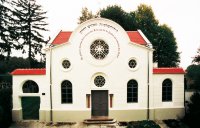
Jews in the Early Modern Age
In the research over the last years, there has been a focuse on the History of Jews in the early modern age.
The following two projects have been carried through:
|Austria Judaica| and |Von Silberhändlern und Münzjuden|
2011 an edition of source material to the History of the Jews in Vienna and Lower Austria in the 16th and 17th centuries was published: Austria Judaica. Quellen zur Geschichte der Juden in Niederösterreich und Wien 1496–1671. Bearbeitet von Peter Rauscher unter Mitarbeit von Barbara Staudinger. Mit einem Beitrag von Martha Keil. Quelleneditionen des Instituts für Österreichische Geschichtsforschung, Band 7. Böhlau-Oldenbourg, Wien-München 2011.
Information: |mail: Sabine Hödl|

Jewish Life in the Eastern Galician Triangle 1860–1939
The ethnically as well as religiously heterogeneous population inhabiting the 49 eastern districts of the Habsburg crown land Galicia in the early 20th century went down in history as the “Eastern Galician Triangle”. Its research raises questions which continue to be highly relevant – also for today’s societies: which social and individual requirements conditioned a lasting peaceful co-existence? How did intercultural conflict evolve and manifest itself – in particular the various forms of anti-Semitism – and which strategies were used to resolve those conflicts?
During the eight decades that were covered in this project, Galicia’s population consisted of 3-5.5 million people: 60–66% were Greek Catholic Ukrainians, 20–30% were Roman Catholic Polish people and 10–13% were Jews. Additionally, there were small groups of Germans and Armenians. The project looked into the life of Eastern Galician Jews with their Ukrainian and Polish neighbours in the various social “scapes” – in villages, towns and cities as well as the industrial area of Boryslaw. On the one hand, population- and economic statistics as well as administrative, police and court files were drawn on. On the other hand, sources of a more individual character were compared with each other but also with quantifiable parameters. Examples for these sources were ego-documents (letters, diaries, memoirs) and contemporary literary texts representing all three population groups plus specific places, social milieus, individual female and male perspectives as well as the views and perceptions of individuals. The pooling of subjective and objective, of individual and collective illustrates the forms of co-living in the respective social scapes and under the corresponding political and constitutional frameworks. Until 1918, Eastern Galicia was part of the Austrian half of the Habsburg monarchy which defined itself as a multi-ethnic state. Between 1918 and 1939, the Galician Jews lived in the Polish nation-state together with their Ukrainian and Polish neighbours; one third of that state’s total population, though, consisted of minorities.
The differing lifeworlds were opened up to researchers with the help of “culture” as an overarching term. This term encloses symbolic systems with their norms and values, experiences, perceptions as well as ways of thinking and processing thought – ending up in behaviour. Culture, however, encompasses more – the immediate surroundings of people, their economic and social positions and their living conditions. The connection between the lifeworld approach and socio-historical perspectives, the crossing over of various perspectives and perceptions ensured that bias and narrowed views wereavoided.
Similarly to today, the actors of the Eastern Galician Triangle lived in their three parallel universes. Intercultural communication only came into being in specific social scapes. This explains why we often have three historical narratives isolated from each other. The project counteracted fragmentation by enabling an approximation of the whole and looking into shared socio-historical context. Within this setting, the three ethno-cultural communities and their social layers were compared in the course of these eight decades.
Information: |mail: Svjatoslav Pacholkiv|
Thanks to the| FWF Austrian Science Fund| for the funding of this project!
Bildinformation: The emigrant house in Lemberg (1930) was a common point of contact for Jewish, Ukrainian and Polish emigrants who received temporary accommodation, advice and training. It was financed and built by Jewish, Ukrainian and Polish cooperatives. © Zentrales Staatliches Historisches Archiv der Ukraine in Lemberg (CDIAUL), Fond 854 - Verband der Sozialorganisationen für Emigrantenbetreuung in Lemberg und |Nationales Digitalarchiv| (Narodowe Archiwum Cyfrowe)

Jewish sponsors and patrons of the arts
This research project examined the many sponsorships and donations by Jews, which were particularly common in the 19th century. The philanthropy and patronage of the arts by Vienna's Jews reflect an attempt to win the approval of bourgeois society through social awareness.
The project focused not only on large and well-publicised donations but also on the numerous small and less significant gifts that permitted many social institutions to survive.
The conditions attached to the donations gave an insight into the institutions and persons that the donors thought worthy of assistance, in other words how they appraised the social conditions of the time. This is particularly evident in donations for specific professional groups, company donations and those for needy dependants.
Information: |mail: Injoest|
We thank the Austrian National Bank Jubilee Foundation Fund for its support.
Where have all the Jews gone
For example: St. Pölten. Migration and present times, displacement and memory
Sparkling Science Projekt (2011–2012)
The project drew upon historical research on the Jewish history in Austria with a regional focus on St. Pölten (home town of the participating pupils) and combined it with the highly relevant issue of migration. The scope of the scientific work comprised three sub-projects, which were thematically and methodically interwoven and pursued the following objectives: To deepen the knowledge about the Jewish history of St. Pölten with regard to migration and displacement; to develop and evaluate generally valid parameters of successful and failed migration; to create awareness and to analyse the migration experience of oneself and of others, and to explore the cognitive process itself.
Within the context of an anonymous survey, to be carried out in the 6th and 7th grades of the partner schools (approx. 200 pupils), the first sub-project determined the anchoring of the history of the Jewish community in St. Pölten within the collective memory of the young people, as well as their attitudes to migration, integration and exclusion. In the second sub-project, three classes (approx. 90 pupils) analysed unedited Jewish memoirs from Austria in accordance with the methods of modern migration research, and compared the largely voluntary migration of the 19th and 20th century with the forced migration following the “Anschluss” in 1938. The pupils’ own cognitive process was also part of the investigation. The third sub-project (publication) explored “Jewish Migration to the rural Areas of Austria 1848-1921” and incorporated the results provided by the pupils.
Introductory workshops provided pupils with information on the methods and practice of historical and social science research, on the analysis of autobiographical texts and on Jewish religion and culture. The field trip „Searching for Traces of Jewish St. Pölten“ firmly linked the theories to specific locations within the city. As a creative by-product, an accompanying film was produced, which made use of historical footage.
Presentation of the results: |BG/BRG Josefstraße| and |BRG/BORG Schulring|
Project leader: |mail: PD Dr. Martha Keil|
Researchers: |mail: Dr. Wolfgang Gasser| und |mail: Mag. Iris Palenik|
Cooperation partners:
|BG/BRG St. Pölten, Josefstraße|
|BRG/BORG St. Pölten, Schulring|
|Niederösterreichisches Landesarchiv|
ORF, Historisches Archiv
Sponsored by |BMWF–Sparkling Science|
Publication
Wolfgang Gasser, Aneignung und Entfremdung von Geschichte(n). Erkenntnisse aus dem Projekt „Sag mir, wo die Juden sind“, am Beispiel St. Pöltens. In: Medaon. Magazin für jüdisches Leben in Forschung und Bildung 12/2013, S. 1–16. |Download|

„De-registered“
The forced displacement of the St. Pölten Jews to collections flats in Vienna, 1938-42
|Sparkling Science|-Project (2015-2016)
The eviction and forced displacement to so-called collection flats within their hometowns and in Vienna are barely being mentioned in the ego documents of the Jews and Jewesses dislodged from Lower Austria between 1939-1942. Neither the affected persons themselves nor the historians researching the Shoah attributed high importance to this initial displacement; it was too much overshadowed by the subsequent traumatic events. The present project therefore for the first time looked into the hitherto unevaluated archival material and life historical sources in order to examine the administrative and regulatory processes on the one hand and the impact on those affected on the other hand.
Two seventh grade classes of two high schools in St. Pölten (approximately 50 students) looked into the family history and social situation of Jews and Jewesses in their home town before 1938 and into their life realities in those collection flats. Based on their own reflection on the meaning of living and being at home, the adolescents discussed the information gained on forced displacement within the Jewish ego documents. Wolfgang Gasser documented their cognitive process.
In a second sub-project Philipp Mettauer researched the organisation and processing of forced displacements by National Socialist authorities. Furthermore, number, location, size and furnishings of those collection flats in Vienna as well as the life realities and the freedom of action of its inhabitants were being looked into. For the reconstruction of living conditions and social networks from those displaced from St. Pölten, he also used the students’ research results. Further, some pupils voluntarily took part in organising a meeting of St. Pölten Jews’ descendants.
Projectleader:|mail: PD Dr. Martha Keil|
Researchers: |mail: Dr. Wolfgang Gasser|, |mail: Dr. Philipp Mettauer|, Mag. Iris Palenik
Cooperation with:
|BG/BRG St. Pölten Josefstraße |
|BRG/BORG St. Pölten, Schulring |
|Nationalfonds der Republik Österreich für Opfer des Nationalsozialismus|
|Niederösterreichisches Landesarchiv (NÖLA)|
This project has a Top Citizen Science-extension project.
In the project „Our expelled Neighbours: Jews in Central Lower Austria – Research and Commemorative Culture“ of the Institute for Jewish History in Austria citizens are invited to look in their archives for memories like objects, pictures, documents and letters. The aim of the project is to find out more about various aspects of Christian-Jewish coexistence before, during and after the war – friendship, school, professional and everyday life.
|More information|

History of the Jews in Lower Austria 1782–1938
So far, a history of the Jews in Lower Austria from the time of Tolerance to the creation of the communities in the middle of the 19th century to the eve of their destruction in 1938 had to be wished for. An integrate history of the Jews of Lower Austria and of their 15 communities during that period, however, has now been completed, taking political, cultural, religious, social and economic questions into consideration.
The origin of the first Jewish immigrants in the middle of the 19th century was looked into, as well as the circumstances that led to the foundation of the communities. How did the communities develop in the following decades, how was the infrastructure (synagogues, cemeteries, etc) set up and how could the communities establish themselves during that time? An analysis of the demographic development of the Jewish population of Lower Austria until 1938 as well as the economic and social structures of the Israelite Religious Community (the IKG) permits now a comparison with other IKGs in Austria and Central Europe.
Further, the question of the degree of integration of Jews into non-Jewish majority society as well as the integration of the IKGs into the public life of towns and cities where they were located has been looked into. The problems of assimilation and of secularisation as well as their repercussion on the IKG – e. g. regarding withdrawals from the community or mixed marriages and resulting differences within the communities – was investigated into with the help of case studies. An analysis of the results from the community elections as well as a comparison of these results with each other offers now some insight into the inner political relations of the communities – in addition, the IKG's inner conflicts concerning religious questions were picked out as a central theme. Further, a focus lay on the research of Jewish clubs and organisations as well as the beginnings of Zionism in Lower Austria and its development until 1938.
Information: |mail: Christoph Lind|
Publication
Christoph Lind, „Kleine jüdische Kolonien. Juden in Niederösterreich 1782–1914“. Mandelbaum Verlag, Wien 2013.
|Further Information|
Look at the online report from the austrian newspaper „Die Presse“: |Die Presse, March 11, 2008|
We would like to express our thanks to the FWF for supporting this project: |Fonds zur Förderung der wissenschaftlichen Forschung|
Max Grunwald and the „inventing of Jewishness“
The research project was to concern itself with a so far rather neglected aspect of cultural and religious identity using the Viennese rabbi and historian Max Meir Grunwald (1871–1953) as an example. The Jews of the Fin de Siècle have been mainly looked at as a minority divided into two parts: one group of „assimilated“ Jews was standing opposite a group of „orthodox“ Jewish migrants from Eastern Europe.
The contrasting concept of „assimilated“ versus „orthodox“, however, obstructed the view on an identity that was on the one hand traditional, but that also saw itself as modern. This positioning can still be found in many parts of today‘s Jewish life. It is not only reflected in the biography of Max Grundwald, who was the husband of Margarethe Bloch who was in turn the daughter of the pugnacious rabbi and member of parliament Samuel Bloch.
Grunwald was historian, rabbi, inventor of Jewish folklore and founder of Hamburg‘s Jewish Museum. His complex identity is also reflected in a new interpretation of Jewish history between modern science and folklore. Thus the historiographic work of Max Grunwald and the conditions of its genesis in Vienna have to be categorised and contextualised within the Jewish historiography of the early 20th century.
Understanding historiography as a maker of identity, the research project looked into the aspect of multi-stratification and the (by no means lacking) contradictoriness of religious and cultural Jewish identities. The „invention“ of Jewishness and the idea of what was to be Jewish have not only been conveyed by historiography but to a substantial part also by museums – the places where cultural memory is constructed and imparted.
The history of historiography, museological history and the question of places and rites of memory form different contexts in which various identities have been asked for. The biographical details of Grunwald (1871–1953), whose path led from Hamburg and Vienna to Jerusalem, already refer to the fact that Jewish history should not and cannot simply be seen as part of a local, regional or national history, but that it is to be localised within a super-national history.
Information: |mail: Barbara Staudinger|
This project was part of the programme „Dynamische Qualitätssicherung Geistes-, Sozial- und Kulturwissenschaften“ financed by the |Federal Ministry of Science and Research|.
Publications
Barabara Staudinger, Von Dreideln, Mazzes und Beschneidungsmessern. Jüdische Dinge im Museum. Ausstellungskatalog (hg. gem. mit Birgit Johler). Wien 2011
Dies., Der kategorisierende Blick: „Jüdische Volkskunde“ und die Verortung des Judentums. In: Birgit Johler, Barbara Staudinger (Hrsg.), Ist das jüdisch? Die „Jüdische Volkskunde“ in historischer Perspektive. Wien (Buchreihe der Österreichischen Zeitschrift für Volkskunde). Wien 2010
Dies., Die Volkskunde und das Jüdische – die „Jüdische Volkskunde“. Eine Standortbestimmung (gem. mit Birgit Johler). In: Birgit Johler, Barbara Staudinger (Hrsg.), Ist das jüdisch? Die „Jüdische Volkskunde" in historischer Perspektive. Wien (Buchreihe der Österreichischen Zeitschrift für Volkskunde). Wien 2010
Dies., Collecting Identities: Max Grunwalds (1871–1953) jüdisches Wien. In: Martin Scheutz, Vlasta Valeš (Hrsg.), Wien und seine WienerInnen. Ein historischer Streifzug durch Wien über die Jahrhunderte. Festschrift für Karl Vocelka zum 60. Geburtstag. Wien, Köln, Weimar 2008, S. 235–252
At Scheys
Researcher: |mail: Lisa-Maria Tillian|
Dissertation at the Faculty of Historic and Cultural Studies of the University of Vienna. Project supervisor: |mail: PD Dr. Martha Keil|
Finished 2013
Besides plenty of records associated with the family business, the Rothschild Archive in London preserves a valuable collection of personal papers. These documents enable historians to obtain a special view of several members of the most prominent Jewish family of the 19th Century. But not only can the Rothschilds be explored – a special preciosity within the private papers of the Archive leads to Austria and into the world of the Jewish family Schey, more precisely into the world of Mathilde Schey (1861–1940). In 2001, the private paper collection of the Archive was amplified by Mathilde´s letters: descendants of Leopold de Rothschild (1845–1917) and his wife, Marie Perugia (1862–1937), who grew up in Austria/Italy, gave a large number of letters addressed to Marie to the Archive.
As the sender of the bulk of the letters appears Mathilde Schey (from 1887 Mathilde Lieben), the cousin of Marie Perugia (from 1881 Marie de Rothschild). Mathilde was one of eight children of the wholesale merchant Friedrich Schey (1815–1881) and his wife Hermine, formerly Landauer (1822–1904).
The Schey family was part of the Jewish upper-class of Vienna. The story of the advancement of the family exemplifies the stories of many wealthy Jewish families at that time, who managed to benefit from the economic conditions and the finally achieved equality under public law. In the year 2007, the Municipal and Provincial Archives of Vienna dedicated an exhibition to the family Schey in which Mathilde´s father, Friedrich Schey, was brought into focus due to his economic activities, as well as due to his cultural commitments. In the exhibition catalogue, Mathilde is mainly mentioned in connection with her husband, the chemist, Adolph Lieben. Her previously unknown letters allow us to place the girl and the woman, Mathilde Schey/Lieben, as the focus for my intended examination.
The existing letters of Mathilde to her cousin Marie embrace the period from 1872 to 1937. Not only the intensive practice of the writing itself – which had already been cultivated during infancy – but also the contents of the letters, bear witness to the adoption of bourgeois values and conceptions, and to belonging to the social upper–class in Austria. Therefore one central question within the analysis of the letters will be how the protagonists dealt with the balancing act between the conservation of Jewish autonomy and identity on the one hand, and assimilation and cosmopolitanism on the other.
Mathilde’s letters to her cousin Marie also draw a picture of a big family and social network which came about as a result of well–directed marriages. It becomes apparent that this network acted as a social safety net, and that help from the wealthier family members was virtually called for. The letters provide rich material for detailed research into the family–historical aspects of the networks and the social environment of the ladies Schey (Lieben) and Perugia (Rothschild).
Furthermore the letters offer an insight into the cultural practices of the Jewish bourgeoisie in the last two decades of the 19th Century. Special attention shall be paid, for example, to references to the realities of life, travelling, upbringing and education as well as to mentions of cultural consumption (literature, music, theatre).
Last, but not least, the letters – written from one woman to the other – allow insights into female sites and areas of the Jewish bourgeoisie. It will be of central interest to explore role models, constructions, expectations, self-cognition and positioning within the family and within society. Amongst others, the question of a possible multilayered female identity shall be traced: Mathilde Schey, for example, was in different phases of her life, both an upper-class-woman and a Jewess, as well as a wife and, subsequently, a widow. One can suppose that diverse patterns of action arose from each aspect of this multilayered identity.
All items were reproduced with the permission of The Rothschild Archive.
Publikationen
Lisa Tillian, „Hugs from your sincere friend Thildi“: Letters from Mathilde Lieben to Marie de Rothschild. In: The Rothschild Archive Review of the Year April 2009 to March 2010, London 2010, pp. 35–41.
Lisa Tillian, „Tausend Dank für dein Briefl.“ Eine Untersuchung weiblicher Lebenswelten im jüdischen Großbürgertum in Wien zwischen 1872 und 1937 anhand der Briefe von Mathilde Lieben an Marie de Rothschild. Unveröff. Diss. Univ. Wien, Oktober 2013 |Download|
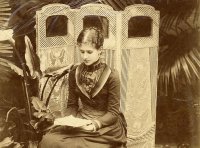
Jewish women in the late Middle Ages
Active in business, invisible in the synagogue
In the 13th century the legal and social situation – but not the socio-religious status – of women in Ashkenazi communities, France and Italy experienced a significant improvement both under Jewish law and under the civil laws governing the Jews (legal status in court, mobility, education, protection from mistreatment, easing of some Halakhic constraints, e.g. imprisonment).
This was due to their increasing importance in the economic life of the town, community and family. Although women accounted for only 5 per cent of the major loans to Austrian rulers and nobles, the lifestyle and possibilities for Jewish women from upper-class families were similar to those of noble women. At a regional level they accounted for one third of the business transactions with tradesmen and the lower classes. Not surprisingly, many of the businesswomen were widows, although there were a good number of married women as well.
Even though the structure of authority of the mediaeval patriarchal society of Jews as well as of Christians was not broken down fundamentally, individual women did succeed in gaining communal power and influence by virtue of their financial means – this aspect of Jewish history has only become visible through the methods of Gender Studies. Women functioned as negotiators, tax collectors, cemetery administrators and in two cases even as chairwomen of the parish council. The consequent exclusion of women from synagogues and services stands in extreme contrast to their in many ways self-determined lives. It therefore seems reasonable to assume that this exclusion aimed at ousting women from the last bulwark of public honour. The rabbis' main argument was female morality that also defined man's high reputation – here the parallel to statements of Christian scholars is baffling. On the other hand, Jewish women did internalise the roles ascribed to them and even increased them voluntarily. They possibly oriented themselves towards the most holy women of Christian society, the nuns, who had been banned from the church building by architectural manifestations and similar concepts.
Taking this aspect into consideration, the increasing exclusion of women from the synagogue may be seen as a „competition in piousness“ rather than a counter reaction of male oligarchy to positions of female power. „Enclosure of nuns and women‘s school“ – the separation and isolation due to reasons of purity and morality are comparable concepts.
Information: |mail: Martha Keil|
From 2002 – 2003, this project was supported by the Charlotte Bühler grant of the |FWF|.
Publications
Martha Keil, Aguna („die Verankerte“): Strategien gegen die Benachteiligung der jüdischen Frau im Eherecht (1400–1700). In: ASCHKENAS – Zeitschrift für Geschichte und Kultur der Juden Jg. 17, Heft 2 (2007, erschienen 2010) 323–343.
Dies., Sittsam und mächtig: Jüdische Frauen im Spätmittelalter. In: Gerald Lamprecht (Hg.), „So wirkt ihr lieb und hilfsbereit...“. Jüdische Frauen in der Geschichte. Graz 2009 (Clio -historische und gesellschaftspolitische Schriften 8), 35–49.
Dies., Mobilität und Sittsamkeit: Jüdische Frauen im Wirtschaftsleben des spätmittelalterlichen Aschkenas. In: Wirtschaftsgeschichte der mittelalterlichen Juden (Hg. von Michael Toch, Schriften des Historischen Kollegs München, Kolloquien 71, München 2008), S. 153–180.
Dies., Schutzkreis und Fürbitten: Geburt und Tod bei Juden und Christen im mittelalterlichen Aschkenas. In: Chilufim. Zeitschrift für jüdische Kulturgeschichte 4 (2008), S. 59–78.
Dies., Unsichtbare Frauen oder: „...was nicht sein darf.“ Jüdische Geschäftsfrauen im Spätmittelalter als Forschungsobjekte. In: Zwischen den Zeilen. 20 Jahre Institut für jüdische Geschichte Österreichs (Juden in Mitteleuropa 2008), S. 40–49 |Download|
Dies., Geschäftsleben und Frauenrechte: die wirtschaftliche, rechtliche und sozio-religiöse Lage jüdischer und christlicher Frauen in Österreich, Kroatien und der Tschechischen Republik (13. bis 16. Jhdt.). Ein Werkstattbericht, in: Ein Thema – zwei Perspektiven, ebda., S. 307-317 |Download|
Dies., Jüdinnen als Kategorie? Judinne in obrigkeitlichen Urkunden des deutschen Spätmittelalters. In: Räume und Wege. Jüdische Geschichte im Alten Reich 1300–1800 (Hrsg. von Rolf Kießling, Peter Rauscher, Stefan Rohrbacher, Barbara Staudinger (Colloquia Augustana 25) Augsburg 2007, S. 335–361.
Dies., Unsichtbare Frauen oder „was nicht sein darf.“ Jüdische Geschäftsfrauen im Spätmittelalter als Forschungsobjekte. In: Beste aller Frauen. Weibliche Dimensionen im Judentum. Ausstellungskatalog (Hg. im Auftrag des Jüdischen Museums Wien von Gabriele Kohlbauer-Fritz und Wiebke Krohn, Wien 2007), 98-107.
Dies., „Und sie gibt Nahrung ihrem Haus“. Jüdische Geschäftsfrauen im spätmittelalterlichen Aschkenas. In: David. Jüdische Kulturzeitschrift, 17.Jg, Nr. 66 (Sept. 2005), S. 54–56 |Download|
Dies., „Und sie gibt Nahrung ihrem Haus“. Jüdische Geschäftsfrauen im spätmittelalterlichen Aschkenas. In: Europas Juden im Mittelalter. Hg. vom Historischen Museum der Pfalz Speyer. Speyer 2004, S. 83–89.
Dies., „She Supplied Provisions for her Household“. Jewish Business Women in Late Medieval Ashkenaz. The Jews of Europe in the Middle Ages. Edited by Historisches Museum der Pfalz Speyer, Speyer 2004, S. 83–89.
Dies., Lilith und Hollekreisch – Schwangerschaft, Geburt und Wochenbett im Judentum des deutschen Spätmittelalters. In: Gabriele Dorffner, Sonia Horn (Hg.) Aller Anfang – Geburt, Birth , Naissance. Tagungsband der 5. Wiener Gespräche zur Sozialgeschichte der Medizin (2004) S. 145–172.
Dies., Namhaft im Geschäft – unsichtbar in der Synagoge: Die jüdische Frau im spätmittelalterlichen Aschkenas, in: Europas Juden im Mittelalter. Beiträge des internationalen Symposiums in Speyer vom 20. bis 25. Oktober 2002, hg. von Christoph Cluse. Trier 2004, 344–354
Dies., Public Roles of Jewish Women in Fourteenth and Fifteenth-Century Ashkenaz: Business, Community, and Ritual, in: The Jews of Europe in the Middle Ages (Tenth to Fifteenth Centuries): Proceedings of the International Symposium held at Speyer, 20-25 October 2002, hg. von Christoph Cluse, Turnhout: Brepols, 2004 (Cultural Encounters in Late Antiquity and the Middle Ages, 4) S. 317–330.
Dies., Projekte zu jüdischen Frauen im spätmittelalterlichen Aschkenas. In: Pardes Nr. 9 (Dezember 2004), S. 21–27.
Dies., Geschäftserfolg und Steuerschulden. Jüdische Frauen in österreichischen Städten des Spätmittelalters. In: Frauen in der Stadt. Hg. von Günther Hödl, Fritz Mayrhofer und Ferdinand Opll. (Beiträge zur Geschichte der Städte Mitteleuropas Band XVIII = Schriftenreihe der Akademie Friesach 7), Linz 2003, S. 37–62.
Dies., Rituals of Repentance and Testimonies at Rabbinical Courts in the 15th Century. In: Papers of the Workshop „Oral History in the Middle Ages“, ed. by Gerhard Jaritz. Budapest 2002, S. 159-170.
Dies., „Maistrin“ und Geschäftsfrau. Jüdische Oberschichtfrauen im spätmittelalterlichen Österreich. In: Sabine Hödl, Martha Keil (Hrsg.), Die jüdische Familie in Geschichte und Gegenwart. Bodenheim/Mainz 1999, S. 27–50.
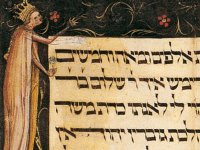
The Jewish Cemetery Währing
as a source for the social history of the Jewish population of Vienna 1784–1874
An extensive database was established between 1992–1998 as result of a research project of the Federal Ministry of Education, Science and Culture.
The database contains 8.600 entries giving details about names, origin, address, occupation, dates of birth and death, cause of death and number of the graves of those Jews who were buried at the Jewish cemetery in Währing. The epitaphs were analysed in cooperation with the Bar Ilan University Tel Aviv by Shlomo Spitzer and his team.
The Jewish cemetery in Waehring (Schrottenbachgasse, 18th district of Vienna) was established under the reform legislation of Joseph II after the old Jewish cemetery in Seegasse had been closed in 1784. For reasons of hygiene it had been decided that burials should take place henceforth outside the city walls. This cemetery was used by the Jewish community of Vienna until 1874.
It was closed when the municipal Central Cemetery, which contains a section for the Jewish community, was founded.
The Waehring cemetery originally had around 9,500 graves, of which 7,000 remain today. Part of the cemetery was destroyed during the Nazi era to make way for a fire-fighting reservoir.
The Waehring cemetery is regarded as a counterpart to the Biedermeier cemetery in St. Marx (where Mozart was originally buried) and is an important monument in the social history of Vienna. The gravestones are of historical and architectural significance.
Information: |mail: Martha Keil|
The persons burried at the Jewish Cemetery Waehring can be found on the |Online-Datenbank der Israelitischen Kultusgemeinde Wien| (Database of the IKG Vienna).
|Information |about guided tours and school projects.
This project was financed by the Federal Ministry for Education, Science and Culture.
Publications
Martha Keil (Hg.), Daniel Kaldori (Fotos): Von Baronen und Branntweinern. Ein jüdischer Friedhof erzählt. Wien 2007, 112 Seiten.
Martha Keil: „... enterdigt aus dem Währinger Friedhof“. Der jüdische Friedhof in Wien-Währing während des Nationalsozialismus. In: Studien zur Wiener Geschichte. Jahrbuch des Vereins für Geschichte der Stadt Wien 61 (2005) S. 7–20.
Dies., Von Baronen und Branntweinern. Der Währinger jüdische Friedhof. In: Martha Keil, Elke Forisch, Ernst Scheiber, Denkmale – Jüdische Friedhöfe in Wien, Niederösterreich und Burgenland. Hrsg. von Club Niederösterreich, Institut f. Geschichte der Juden in Österreich, Wien 2006, S. 54–59.
EDUCULT. Institut für die Vermittlung von Kunst und Wissenschaft bietet als Publikation den Bildband „Währinger jüdischer Friedhof – Vom Vergessen überwachsen“ an.
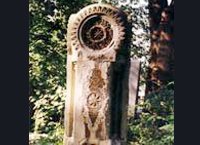
Making Traces Legible in the Nazi Forced Labor Camp Roggendorf/Pulkau
The granite quarry in Roggendorf/Pulkau was an early industrial site that brought jobs to a structurally weak region. During the Nazi era, Soviet Russian prisoners of war, Polish and Ukrainian „Ostarbeiter” and, from November 1944 on, Jewish deportees from Hungary were used here for forced labor. Today, only a few traces of the Nazi forced labor camp are still visible. The history of the site has almost been forgotten.
The project explored the history of the Roggendorf/Pulkau granite quarry together with local Citizen Scientists and exhibits it in digital space. Two artists – Eva Andraschek and Martin Krenn – worked with new, digital means on the artistic examination of the site. Together we were working on new ways of dealing with forgotten places of forced labor in Lower Austria.
A cooperation between: University of Continuing Education Krems | University of Applied Sciences St. Pölten | Institute for Jewish History of Austria, St. Pölten | IKT – Institute for Cultural Studies and History of Theater of the Austrian Academy of Sciences | openGLAM (project coordination)
Project partners: Municipality of Pulkau | Kulturverein Bildung hat Wert, Pulkau | Krahuletz Museum, Eggenburg | Museum Horn | Museum Retz | Bundesdenkmalamt | erinnern.at | University of Graz, Center for Jewish Studies | University of Vienna, Institute for Prehistory and Historical Archaeology
Informationen: |Spuren lesbar machen|

Names, Graves and Memory
The Psychiatric Hospital Mauer-Öhling (Lower Austria) during National Socialism
Top Citizen Science Project (01.08.2019-30.04.2020)
After the termination of the so-called „Action T4“ in August 1941, in which about 1,300 patients of the „Heil- und Pflegeanstalt“ Mauer-Öhling were deported to Hartheim near Linz and gassed there, murder was going on internally. The mortality rate rose dramatically, from about five percent in the pre-war period to 18 percent by the end of 1943. The regular institutional cemetery, whose area with 1,000 graves since its establishment had been enough, soon reached its capacity limits, although the graves were reassigned after nine years. In June 1944, therefore a piece of woodland in the north-northeast of the cemetery wall along the street Amstetten-Waidhofen was cleared to expand the cemetery by about 300 graves in five double rows.
The first patients buried on this site from 10th November 1944 onwards were victims of the euthanasia murders of the resident physicians Dr. Emil Gelny and Dr. Josef Utz. In total, another 190 patients were killed by the end of the war and thrown into mass graves on the „New Part“ - up to nine persons per shaft. By May 8, 1945, a total of 275 dead were buried on the site. The extended part of the cemetery was abandoned in the 1980s and spruces were planted on the grave rows, which meanwhile had to be cleared again due to bark beetle infestation. Today the area is empty. There is no indication of its contaminated history, the site still awaits an appropriate design.
The forgotten mass graves of the institutional cemetery were the starting point of our project. The interest was overwhelming. More than 400 people attended the events and presentations in Amstetten and St. Pölten, many of them contributed to the intensive discussions.
13 Citizen Scientists – relatives of victims, clinic employees and local historians – took on independent research supported by the project team. The grave with the number 64 was chosen as a representative of the mass graves as it can be identified on site due to a still existing mark. Based on their personal interests, Citizen Scientists researched the biographies of five buried persons as well as additional victims from Nazi “Euthanasia” from their own family, their place of residence or from various groups of victims. One participant evaluated the relevant information in the parish chronicle of Mauer-Öhling, another examined the evacuation of the old people's homes in the district of Amstetten which had been fatal for some of the residents. The commitment of the Citizen Scientists is having an effect: together with the hospital Mauer, a dignified presentation of the cemetery is being considered.
|Final Report|
Project management: |mail: Martha Keil|
Project staff: |mail: Wolfgang Gasser|, |mail: Philipp Mettauer|, |mail: Tina Frischmann|
Cooperation partner: |mail: Thomas Buchner| (City Archive Amstetten)
In cooperation with the |City of Amstetten |and |Landesklinikum Mauer|. Funded by the |Austrian Federal Ministry of Education, Science and Research|.
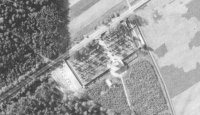
Our expelled Neighbours (Top Citizen Science Project)
Jews in Central Lower Austria – Research and Commemorative Culture
Based on private photos, documents and interviews the project participants looked into the lives and fates of the Jewish population in central Lower Austria before, during and after National Socialism.
The census of 1910 registered 921 people in St. Pölten and Central Lower Austria – the catchment area of the Jewish Religious Community (IKG) St. Pölten – professing themselves as Jews. National Socialists, however, also defined people as “Jewish” who had three Jewish grandparents. All of them were forced to “resettle” from St. Pölten to Vienna in June 1940. According to the latest research results 575 persons were murdered in the camps and ghettos.
This project invited all interested parties to look into the lives and fates of the Jewish population in central Lower Austria by using private photos, documents and memories. The work organisation was divided into two public events at the beginning and at the end, as well as six open workshops. In total about 70 people between the age of 17 and 83 years participated, including descendants of Jewish families. All events were held at the Catholic Bildungshaus St. Hippolyt in St. Pölten, which was able to address different target groups with its wide catchment area and its broad focus.
The scientific results of the project can be divided in two big areas: On the one hand, the participants brought documents and photos from their family archives, which were identified in the first step and digitised to secure them for a later evaluation. On the other hand, some of the participants shared partially already opened up family collections, whose richness and good preparation allowed an intensive research. The extensive estate of a family with Jewish members, which contained collectables from the Nazi era, and the documents of a Jewish family from Wilhelmsburg were particularly profitable. The results were presented at the final event on November 9th, 2017 and will be published online ensuring data protection.
During the intense discussions in the workshops it became clear that still, 80 years after the „Anschluss“, depending on the specific family history, it can not be talked about the Nazi period without stress and uncertainty. This finding is a valuable insight in the context of memory and dealing with the Nazi past. The commitment of the project participants gave the final impulse to set „Stones of Remembrance“ from October 2018 onward for the victims of the Shoa at their last residential addresses in St. Pölten.
Information: |Zentrum für Citizen Science|
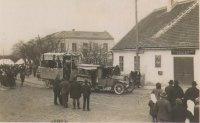
Uprooted?
National socialist persecution in family’s memory of Austrian Jews
The long term effects of National socialist persecution in family’s memory of Austrian Jews were the main content of this project. The research interest focused on how the experiences of expulsion and escape were passed on to the next generations.
Embedded in the historical context, different aspects of this transgenerational transmission were analysed. For this purpose, semi-structured narrative interviews with descendants of Austrian emigrants were conducted in Argentina, which is the most important country of forced emigration of Jews in South America. The key issues were focused on the complex field of identity, the political, religious or cultural origin of the family, the relationship to Judaism, Austria and the country of exile. From a previous project there were already interviews with the „first generation“ at our disposal, which deliver important results and allow major synergy effects.
In the 21st century we are heading towards a shift, where the eye witnesses of the Nazi-era are passing away but their children and grandchildren carry on their legacies. My interest in contemporary research was therefore focused on their descendants from an interdisciplinary perspective. How the past was mediated and inscribed into family-memories is the key question in this regard. Specific consequences and trans-generational long-term-effects in family histories can be detected as psychological and sociological studies in Germany, Great Britain, the US and Israel show. The trauma of the Holocaust and persecution as well as feelings of rootlessness were passed on to the next generation. Austria lacks any extensive scientific research concerning this matter.
The main issue for this research project focused on the impact of the expulsion, which destroyed the structure of the family of origin. Main questions were: Which consequences had the persecution of the parents on their children’s feelings of „Heimat“ and belonging to the Austrian society? Did it shape the religious, cultural or political life of the descendants? What other aspects are manifested in the family‘s memory, which experiences are reminded, which are taboo? Are myths and family secrets carried on? How does the family deal with traumatic experiences, which coping strategies were developed at the individual level and are there any phenomena of repression?
Information: |mail: Philipp Mettauer|
Funded by the „Zukunftsfonds der Republik Österreich“ and Land Niederösterreich!
Publikation
Philipp Mettauer, Erzwungene Emigration nach Argentinien. Österreichisch-jüdische Lebensgeschichten, Aschendorff Verlag, Münster 2010. Order at |Aschendorff-Buchverlag|
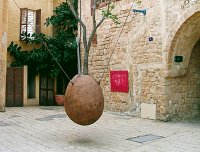
The Jewish Cemetery of Graz: Explore – Conserve – Remember
A contribution to the social and cultural history of the Jewish community Graz during the 19th and 20th century
Project cooperation
After the Shoah, Jewish Cemeteries often have been the last remnants bearing witness to the once prospering and today almost completely destroyed Jewish culture in Europe. Due to the consequences of the extermination of Jewish life the question of the cemeteries‘ preservation and care is today not merely a Jewish matter but rather a matter of public concern. Scientific and public activities are important to keep Jewish culture, life and history in the collective memory.
Beside these aspects of memory the scientific work on Jewish Cemeteries gives us eminent insights into the cultural and social history of the Jewish Communities. Thus we gain new information on the time before the Shoah – information not known before because of the lack of documents.
Based on thorough scientific investigation, this project was dealing with aspects of memory. On the one hand, for the purpose of preservation and visibility, it focused on the photographic and scientific documentation, the art-historically description of the Jewish cemetery in Graz with all its buildings, monuments and gravestones. On the other hand the biographical analysis of the gravestones gave important insights into the social structure and religious orientation of the former Jewish Community. This way we gained more information on Jewish identities in Graz.
The aim of the project was to do research on the culture and social history of the Jewish Community in Graz during the last two centuries. The results were presented to the general public in an exhibition and in a publication. Moreover this project was the beginning of a new way of cooperation between the university and schools.
Weitere Informationen finden Sie |hier|
Gefördert aus Mitteln des |BMWF–Sparkling Science|
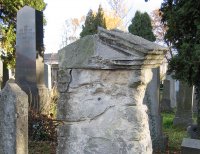
„Lebensraeume“ – Lifestories of Austrian Jews
On behalf of the Institute, the historian Albert Lichtblau collected 216 life-stories and reminiscences of Austrian Jews in the U.S.A. The documents, letters and fotos – most of them copies – are available at the Institute. Download alphabetic list
This unique material was systematically analysed by Eleonore Lappin-Eppel during the project „Alltag, Religion, Kultur, Politik: Jüdische Lebensräume in Wien 1918 – 1939“, funded by the „Zukunftsfonds der Republik Österreich“ and by „MA7 - Wissensschaft“ of the City of Vienna.
Methodically, the project aimed at discerning narrative patterns and linguistically formed pictures about history within written reminiscences – and by interpreting them. In order to ascertain a broad insight, a combination of qualitative and quantitative methods was chosen.
The quantifying method enabled general conclusions. This did not only refer to structural questions concerning the composition of the authors (date and place of birth, level of education, social background, escape route, country/ies of asylum) but also to the localization of religious and political orientations and to the authors' assessment of individual aspects of their lives – such as anti-Semitism or religion. The statements were evaluated through these classifications and a quantifying overall view.
Autobiographies are so-called „soft sources“, sources that reflect subjective perception and experience and cannot initially be judged on the basis of their objective truth. The English language distinguishes between the terms „history“ and „memory“ in order to clarify different perspectives of the past. The German language uses the terms „Geschichte“ (history) and „Gedächtnis“ (memory) or the terms „Geschichte“ and „Geschichtsbilder“ (concepts of history). For the analysis of reminiscences, the term „narrativity“ has been introduced.
It was assumed that it makes a decisive difference where, when and for whom a text was written – thus deciding who was considered to be the audience at the time of writing. Further, the hypothesis was used that the endured NS-experiences essentially formed the retrospective view. Based on this thesis, there is a difference whether the authors managed to escape together with their closest family or whether close family and partners were murdered by the National Socialists or were interned in a concentration camp.
The relationship to Austria after the Second World War presumably reflected on the description of earlier life in this country. Those authors, who managed to re-establish positive contact with Austria via travelling and personal relations, saw their life up to the time of National Socialism differently from those who discontinued any contact to their former fatherland. A change in political or religious orientation after the Second World War also dramatically changed the retrospective view and therefore had to be taken into consideration for the analysis of the texts. Additional criteria for the analysis are the influence of acculturation and origin, influence of the generation of the real and social gender.
By connecting qualitative and quantitative results, the research offers general conclusions about Jewish identity as well as about the religious, cultural, political, economic and social life of Vienna's Jews during the inter-war years.
Information: |mail: Injoest|
We would like to express our thanks towards the Zukunftsfonds der Republik Österreich, the „Kulturabteilung der Stadt Wien“ and the Austrian National Bank Jubilee Foundation Fund for the support of this project.
Publications
Eleonore Lappin-Eppel, Zions Töchter – Mädchen in der Zionistischen Jugendbewegung. In: Gerald Lamprecht (Hg.), „So wirkt ihr lieb und hilfsbereit ...“ Jüdische Frauen in der Geschichte (CLIO gesellschaftspolitische Schriften, Bd. 8), Graz 2009, S. 83–104.
Eleonore Lappin, Jüdische Lebenserinnerungen. Rekonstruktionen von jüdischer Kindheit und Jugend im Wien der Zwischenkriegszeit. In: Frank Stern, Barbara Eichinger (Hrsg.), Wien und die jüdische Erfahrung 1900-1938. Akkulturation – Antisemitismus – Zionismus. Wien–Köln–Weimar 2009, S. 17–39.
1938. Auftakt zur Shoah in Österreich. Orte – Bilder – Erinnerungen. Hrsg. von Dieter J. Hecht, Eleonore Lappin, Michaela Raggam-Blesch, Lisa Rettl und Heidemarie Uhl. Milena Verlag Wien 2008 . 48 Seiten.
Eleonore Lappin, Fanny von Arnstein and her Biographer Hilde Spiel. In: Judit Gazsi, Andrea Petö und Zsuzsanna Toronyi (Hrsg.), Gender, Memory and Jewish Women in Contemporary Europe (Studien zur Geschichte Ost- und Ostmitteleuropas, Bd. 6). Budapest-Herne 2007, S. 89–104.
Eleonore Lappin, Endbericht des Projekts „Wien 1918–1938. Die retrospektive Perspektive österreichisch-jüdischer Autobiographien“ (ungedr.). St. Pölten 2006.
Jüdische Lebensgeschichten. Erinnertes Leben – Erzähltes Gedächtnis (Juden in Mitteleuropa 2006). Download
Albert Lichtblau (Hg.), Als hätten wir dazugehört – österreichisch-jüdische Lebensgeschichten aus der Habsburgermonarchie. In Zusammenarbeit mit dem Leo Baeck Institute, New York und dem Institut für Geschichte der Juden in Österreich. Wien-Weimar 1999.
Publizierte Autobiografien jüdischer ÖsterreicherInnen
|Augenzeugen berichten|
|Spuren in der Zeit|
Urban Historical Research in Lower Austria
The Jewish community in Wiener Neutstadt in the late Middle Ages
After Vienna and Krems, Wiener Neustadt had the largest Jewish community in the late Middle Ages in Austria. Following the expulsion and murder of the Jews in Vienna and Lower Austria in 1420 and 1421, it became the center of Austrian Jewry. The family of Shalom of Neustadt and his relative Rabbi Isserlein bar Petachya formed a learned dynasty whose religious commentaries and decisions on points of law are still cited today.
After the Emperor Frederick III (1439-1493) chose Wiener Neustadt as a royal residence, the Jews came under his tutelage, attracting the resentment of many Christians in the process. But the imperial protection, upheld by his "eternally faithful" citizens, was so effective that there were no persecutions in the town. The expulsion of the Jews in 1496 from Styria, to which Wiener Neustadt belonged, was also bloodless and relatively equitable, with the Jews being allowed up to three years after the official leaving date to sell their houses and property to the town's inhabitants.
Today there is not even a street name to commemorate the once flourishing community. Six Hebrew gravestones incorporated in the town walls are the sole testimony to Jewish life in the Middle Ages.
Information: |mail: Dr. Martha Keil|
Publications
Martha Keil: „vormals bey der Judenn Zeitt“. Studien zur Geschichte der jüdischen Gemeinde Wiener Neustadt im Spätmittelalter. Ungedr. phil. Diss. Wien 1998.
Dies., Juden in Grenzgemeinden: Wiener Neustadt und Ödenburg im Spätmittelalter. In: Martha Keil, Eleonore Lappin (Hrsg.), Studien zur Geschichte der Juden in Österreich, Bd. 2. Bodenheim/Mainz 1997, S. 9–34.
Dies., Der Liber Judeorum von Wr. Neustadt (1453–1500) – Edition. In: Martha Keil, Klaus Lohrmann (Hrsg.), Studien zur Geschichte der Juden in Österreich, Bd. 1. Wien-Köln 1994, S. 41–99.
Kehila Kedusha (Holy Community) of Neunkirchen (c. 1850 to the present)
The history of the small Jewish community of Neunkirchen from its origins in the 19th century until its destruction in 1938 has been reconstructed on the basis of a detailed historical analysis. The fate of this community reflects both the imperial policy towards the Jews and the anti-Semitism of the 19th and 20th centuries. The Holocaust was not a sudden and unexpected catastrophe imported from the outside. The study shows that the precursors to the Holocaust created an attitude that was firmly in place long before the "Anschluss", making the expulsion and annihilation of the Jews of Neunkirchen that much easier to accomplish. The Jews living in this non-Jewish environment had for centuries been alternately accepted and then rejected.
A separate chapter is devoted to the camps for Hungarian Jews who were brought to Neunkirchen in 1944 and 1945 as forced labour to build the bunkers in the main square.
The reminiscences of former inhabitants of the town are also given plenty of space, producing a highly personalised picture of Jewish life in this town.
Information: |mail: Injoest|
We thank the town of Neunkirchen for its support and assistance.
Publications
Gerhard Milchram, Heilige Gemeinde Neunkirchen. Eine jüdische Heimatgeschichte. Verlag Mandelbaum, Wien 2000.
Ders., Die Entwicklung der Jüdischen Gemeinde in Neunkirchen/NÖ im 19. und 20. Jahrhundert. In: Martha Keil, Eleonore Lappin (Hrsg.), Studien zur Geschichte der Juden in Österreich, Bd 2. Bodenheim/Mainz 1997, S. 123–140.
Of Silver Merchants and Mint Masters
Jews and the Vienna Mint in context with sovereign minting policy in the Early Modern Age
The participation in the coinage business does not only stand for a hoped-for financial benefit but also for symbolic gain. Far-reaching financial as well as economic connections were necessary in order to run a mint.
The participation in the coinage business does not only stand for a hoped-for financial benefit but also for symbolic gain. Far-reaching financial as well as economic connections were necessary in order to run a mint.
The fact that some silver suppliers who were already working for the mint were amidst the first Jews to settle in Lower Austria in the early 16th century and to be granted privileges there after the Vienna Gesera (the first expulsion and murder of Jews) of 1420/21, shows the importance and relevance of Jewish silver merchants for the Vienna mint.
Nonetheless, regular trade relations between Jewish merchants and the imperial mint in Vienna intensified only slowly. Reasons were the anti-Jewish politics of the Lower-Austrian body of representatives which opposed the settlement of Jews, but also problems within the minting business: the mint had to fight the illegal export of money – an offence that especially Jewish merchants were accused of. The mint master not only had the tax and credit demands in his sight – from the 17th century onwards those were increasingly demanded of the Jewish community – but had his eye more and more on the Jewry itself. The Jews were perceived as rivals within the money and precious metal business – examples were the accusations against individual Jews of illegal minting or the confiscation of jewellery.
Due to the war and the financial straits of the Holy Roman Emperor the minting business saw a downright boom. As there was a lack of minted coins for the payment of the troops, the precious metal content of the coins was reduced while maintaining their face value. This considerably increased the amount of circulating coins and the profit of the minters. What followed was a galloping inflation. From 1619 onwards, Bohemian and Moravian mints started striking inferior coins, so-called Kippermuenzen; the same happened from 1621 onwards at the imperial mints. Mints were also rented out to private entrepreneurs, some of them Jews, in order to procure money for the short term that would grant independence from the minting production.
In 1623, the striking of inferior coins was brought to an end by Ferdinand II‘s so-called Münzcalada; Vienna's Jews were prohibited from trading in silver and in scrap silver as well as from melting and exporting coins. The earlier-on struck inferior coins were withdrawn from circulation, were then melted and finally re-minted as superior coins.
The Muenzcalada did not, however, end Jewish activity at the imperial mints. In 1633, the appointment of the Viennese Court Jew Leb Pollak to the position of a gold separator at the Vienna Mint had been discussed and somewhat later Salomon Wechsler was seen to work there not only as a supplier of scrap silver and other precious metals but also as a separator. From the 1640ies onwards, Jews who were even given the title of „Imperial Free Coinsupplier“ (kaiserlicher befreiter Muenzlieferant) as well as Court Jews such as Jakob Prager and Jakob Levi del Banco were employed at the imperial mint. A lease of the mint to Jewish consortia was not possible any more, and the banning of illegal melting and of exporting silver and scrap silver was renewed due to the suspicion that Jews were acting as unauthorised separators (Winkelscheider) and money changers. Nonetheless, Jews did remain economically closely connected to the mints due to their position as merchants of precious metal, and being suppliers of scrap silver they provided the Vienna mint with silver.
This changed, however, once Emperor Leopold had decided on the expulsion of all Jews from Vienna and Lower Austria in 1669. Apparently, the Vienna Jews had such a central position within the scrap silver trade, that the supply with silver at the Vienna mint collapsed completely after the expulsion. As suggested by numerous complaints of clerks of the mint, the situation at the mint had dramatically deteriorated. In spite of various initiatives to win Jewish as well as other silver merchants as suppliers for the mint, the situation did not improve.
Soon, however, the framework and conditions changed again. With some, although only individual Court Jews, the Jewry was once again resident in the imperial capital. Hesitatingly, Jewish mint suppliers were fallen back upon - in 1681 Max Schlesinger was appointed to this position, his son Benjamin Wolf succeeded in the office. In the 1690ies, a Jew from Bratislava is verified as silver merchant for the mint. In the early 18th century, numerous Court Jews worked as scrap silver suppliers for the Vienna mint. As had already happened in the 16th century, the residence of Jews in the imperial capital was closely connected to the participation of Jews in the Mint. Only in the course of the 1720ies, however, did Vienna tolerate some so-called „Mint Jews“ („Muenzjuden“) in order to avoid a lack of silver causing further damage to the minting business.
It had thus not been possible to replace function and position of Jews as silver suppliers to the imperial mint. When looking at the period after the expulsion of 1670 the reasons become especially apparent. Silver trade required a closely-knit net of trade contacts to those regions from where the precious metals could be imported. As silver was mainly imported from the Ottoman Empire there was little competition for Jewish merchants. Partly as a result of their expulsion, which caused many Vienna Jews to move to the Ottoman part of Hungary, the Jews had numerous trade relations into that area.
Information: |mail: Dr. Martha Keil|
Project leader: |mail: Univ.-Prof. Dr. Thomas Winkelbauer| (Universität Wien)
Co-worker: |mail: Dr. Barbara Staudinger| |mail: Dr. Martha Keil|
Funded by the |Jubiläumsfonds der Österreichischen Nationalbank|
The End of (My) Childhood?
Kindertransporte (Refugee Children Movement) for the Rescue of Jewish Children and Youths
Sparkling Science Project (2013–2014)
Historic research on the rescue of approximately 2.800 Jewish children and youths via the so-called Kindertransporte (Refugee Children Movement) from Austria during the years 1938–41 is the starting point of this project which will question definitions and criteria of childhood.
The first subproject uses the anonymous analysis of an interview project at a 6th grade school class (approximately 25 students) as a frame to understand the criteria of individual childhoods and their ends.
In the second subproject 3 school classes from two partnering schools (one 6th grade and two 7th grades, altogether approximately 75 students) analyze video- and audio-interviews as well as memoirs of former Austrian Kindertransport – children. Questions on the perception of inconsistencies, strategies of conformance to new environments, integration as well as the process of remembrance are the focal point of this project. The students’ cognitive process is also to be taken up.
The third subproject (dissertation by Merethe Jensen) looks into the Kindertransport from Austria to Scandinavia which has been almost disregarded by modern research; results from the students‘ research are included in the chapter on „The End of Childhood?“. The students will receive an introduction to historic and social science research, developmental psychology, the analysis of autobiographic texts and the methods of oral history and interview techniques in interdisciplinary workshops. In oral history interviews with former Kindertransport – children as well as in workshops and at the final conference the students can apply their learning on interview- and presentation techniques.
Project leader: |mail: Martha Keil|
Contributors: |mail: Wolfgang Gasser| |mail: Merethe Aagaard Jensen| und |mail: Philipp Mettauer|
Partners:
|BG/BRG St. Pölten, Josefstraße|
|BRG/BORG St. Pölten, Schulring|
|Wiener Wiesenthal-Institut für Holocaust-Studien|
|Niederösterreichisches Landesarchiv|
Sponsored by |BMWFW–Sparkling Science|

From Kahal to Religious Community Galician Jews 1772–1790
The objective of this project was research on the transition of Jewish communities from a Kahal organisation, empowered by the Polish-Lithuanian Commonwealth with fiscal and political responsibilities, to non-associated religious communities in the Habsburg Monarchy.
Initially it was necessary to present the preliminary situation, primarily the legal status of Galician Jewish communities based on numerous privileges granted by Polish kings up to 1772. The subject matter of the next chapter was the transition period under the rule of Maria-Theresa, codified in Galician legislation regarding Jews (galizische Judenordnung) in 1776.
This project intended to research in minute detail the period of reforms conducted by Joseph II. During the registration of Galician Jewry (galizische Judenkonskription) in 1782–83 and assignment of „german“ surnames, the absolutistic state made complete lists of the Jewish population, which made possible direct tax collection without participation of Kahals. Subsequently the system of separate Jewish judicial procedures and autonomous organization of Kahals was abolished.
On 7th May 1789 the Galician Tolerance Edict replaced Kahals with so-called Jewish community administrations. From that time Jewish communities were viewed only as „religious associations“ politically subject to the local authorities. The Josephinian legislation regarding Galician Jews (Josephinische galizische Judenordnung) prohibited any associations above the level of separate religious communities.
These changes were considered by the Jews of Galicia to be a limitation of their rights and a serious intrusion of the state into their lives. Their communities were atomized to a considerable degree. The consequences of Joseph II‘s reforms were immense. They influenced cultural and religious self identification, political participation, as well as the entire social and economical development of Galician Jewry in the 19th century and therefore deserve closer consideration.
Information: |mail: Dr. Svjatoslav Pacholkiv|
The research was funded by the |Lise Meitner-Stipendium des FWF| (M1087-G08).
Publications
Svjatoslav Pacholkiv, Das ukrainisch-jüdische Zusammenleben in Galizien und die Konstruktion des Nationalen. In: Die Ukraine. Prozesse der Nationsbildung vom 19. bis 21. Jahrhundert, ed. Andreas Kappeler. Wien-Köln-Weimar 2011, S. 231–244.
Social Implications of the Incorporation of Galicia into the Habsburg Realm. In: Social Change in the Habsburg Monarchy: The Era of Enlightenment – Les transformations de la société dans la monarchie des Habsbourgs: l'époque des Lumières, ed. Harald
After the Edict of Tolerance: Galician Jews 1790–1848
The present project is planned as a continuation of the FWF project |From Kahal to the Religious Community: Galician Jews 1772–1790|. At the beginning of the transition there had been 64 Galician Qahalim associated with each other and having far-reaching political and financial authorities. At the end of the process we have 141 scattered Jewish communities that were solely responsible for religious affairs.
On the basis of the records of the Lviv and Vienna authorities as well as of the Galician Jewish Communities („Israelitische Kultusgemeinden“, IKG), the resulting project is to look at a number of aspects:
1. The economic and social implications of the Edict of Tolerance for the overall community but also for the individual.
2. The influence of the state on the power structure within the IKG in connection with the differences between Hasidism and Haskalah.
3. The Galician educational projects of the Haskalah as another result of Enlightened absolutism.
Numerous Galician Qahalim were already plunged in dept during the transition period 1772–1790; partly, those were debts stemming from the time before the re-vindication of Galicia. Additionally, the increased fiscal burden of the Jewish population at the times of Maria Theresia and Joseph II had led to new tax debts. At the beginning of the Austrian rule, a number of specifically Jewish duties had been introduced in Galicia (tolerance fee, additional charge for kosher meat etc.). This resulted in an enormous financial and social burden for the Jewish population, three quarters of who belonged to the lowest tax group anyway.
In addition we have to question the implications of the de-centralization – or even atomization – of the Galician Jewish community system onto the spreading of the Haskalah and Hasidism. While the Maskilim were in the fore of such „urban“ communities as Lviv, Brody and partly Tarnopol, most of the smaller Jewish communities of the country were dominated by Hassidim. They formed veritable oligarchies whose networks and social interactions will be analyzed.
The German-Jewish school system headed by Herz Homberg is closely connected with the spreading of the Haskalah and Enlightened absolutism. The first of an overall 107 schools and school classes was founded in Galicia in 1787, the zenith of this school system was, however, reached only after 1790. Within this project, the focus will lie on schools but also on pupils as they belong to a generation of differently educated Jews. These youngsters came to be important Jewish protagonists during the events of the year 1848 within the Crown Land. The Jewish picture of Galicia during this year of revolution, which opened an époque of transition from tolerance to civil equality, shall close this project.
Information: |mail: Svjatoslav Pacholkiv|
The research was funded by the Austrian Science Fund (FWF) – P23066-G18: |Fonds zur Förderung der wissenschaftlichen Forschung|!
Publications
Svjatoslav Pacholkiv, Die Politik des aufgeklärten Absolutismus und die Judengemeinden Galiziens. In: Frühneuzeit-Info 22/1–2 (2011), S. 75–89.
Ders., Gminy żydowskie w Galicji w ll. 1772–1848. Zagadnienia badawcze. [Jewish Communities in Galicia 1772–1848. The Research Issues]. In: Galicja 1772–1918. Problemy metodologiczne, stan i potrzeby badań [Galicia 1772-1918. The Methodological Problems, State of Research and Research Needs], Bd. 1–3, ed. Agnieszka Kawalec et al. (Rzeszów 2011) Bd. 2, S. 9–26.
Ders., Українсько-єврейське співжиття в Галичині й конструювання національного [The Ukrainian-Jewish Coexistence in Galicia and the Construction of the National]. In: Україна. Процеси націотворення [Ukraine. Processes of Nation-Building]. Упорядник Андреас Каппелер (Київ 2011), S. 213–225.
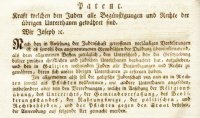
Press research
Until 1938, German-Jewish press research – the academic and critical occupation with this field of research – was confined to reviews as well as the historical representation of individual periodicals and press-related biographies which were published in the before-mentioned periodicals by journalists. Only after the Second World War was the Jewish press understood to be one of the most important sources of Jewish historiography. This resulted in an impressive expansion of the thematic range of press research.
Accordingly, Jewish periodicals were not only looked at in relation to the history of the press, but also as a historic source. They were used as a source when looking at the formation of Jewish identity (or rather identities), ideologies as well as religious, cultural and political movements. The Jewish press not only reflected the relations of Jews to their environment, but also inner-Jewish social developments. Most recent research has started to consider the press as a mirror but also as a factor in the formation of Jewish history and culture.
Jewish press research today uses a variety of methods relating to history, linguistics, literature and cultural studies. However, before analytically scrutinising the source, it has to be painstakingly acquired and indexed. The amazingly high number of Jewish newspapers, magazines, annual periodicals, almanacs, year books, calendars and other periodical publications as well as their ephemerality are considered a special challenge. As is the case with the research of Jewish history in general, the many languages of the sources pose further difficulty which can only be coped with when supported by international co-operations and conferences. (Eleonore Lappin-Eppel)
Information: |mail: Injoest|
Cooperations
|Deutsche Presseforschung, Universität Bremen|
|Arbeitskreis Czernowitzer Presse|
|The Koebner Minerva Center for German History| Hebrew University of Jerusalem
|Compact Memory| – Internet Archive for Historical Jewish Periodicals (18th – 20th centuries, full text)
Publications
Eleonore Lappin, Michael Nagel (Hg.), Deutsch-jüdische Presse und jüdische Geschichte: Dokumente, Darstellungen, Wechselbeziehungen / German-Jewish Press and Jewish History: Documents, Representations, Interrelations (Die jüdische Presse. Kommunikationsgeschichte im europäischen Raum hg. von Susanne Marten-Finnis und Michael Nagel, Bd. 6 und 7, zugleich Presse und Geschichte – Neue Beiträge hg. von Holger Böning, Michael Nagel und Johannes Weber, Bd. 37 und 38), Bremen 2008. |Weiterführende Informationen|
Eleonore Lappin, Zwischen den Fronten: Das Wiener Jüdische Archiv. Mitteilungen des Komitees „Jüdisches Kriegsarchiv“ 1915–1918. In: ebd., S. 229–246.
Eleonore Lappin, Michael Nagel (Hg.), Frauen und Frauenbilder in der europäisch-jüdischen Presse von der Aufklärung bis 1945. (Die jüdische Presse. Kommunikationsgeschichte im europäischen Raum hg. von Susanne Marten-Finnis und Michael Nagel, Bd. 3, zugleich Presse und Geschichte – Neue Beiträge hg. von Holger Böning, Michael Nagel und Johannes Weber, Bd. 29), Bremen 2007.
Eleonore Lappin, Befreiung der Jugend – Befreiung der Frauen Siegfried Bernfeld und die Zeitschriften „Der Anfang" und „Jerubbaal“. In: Ebenda, S. 141–160.
Dies., Fakten und Propaganda in der zionistischen Presse am Beispiel der Monatsschrift „Der Jude“. In: Susanne Marten-Finnis und Markus Bauer (Hg.), Die jüdische Presse – Forschungsmethoden – Erfahrungen – Ergebnisse. (Die jüdische Presse. Kommunikationsgeschichte im europäischen Raum hg. von Susanne Marten-Finnis und Michael Nagel, Bd. 2 zugleich Presse und Geschichte - Neue Beiträge hg. von Holger Böning, Michael Nagel und Johannes Weber, Bd. 28), Bremen 2007, S. 159-178.
Dies., Von der Heimstätte zum Judenstaat: Die Darstellung des Aufbaus des jüdischen Palästina in der Wiener zionistischen Presse 1928-1938. In: Susanne Marten-Finnis, Markus Winkler (Hg.), Die jüdische Presse im europäischen Kontext 1686–1990. Bremen 2006 (= Die jüdische Presse – Kommunikationsgeschichte im europäischen Raum, Bd. 1; zugleich: Presse und Geschichte – Neue Beiträge, Bd. 21), S. 209–222.
Dies., Martin Buber: Zionismus und Chassidismus. In: Manfred Voigts (Hg.), Von Enoch bis Kafka. Festschrift für Karl E. Grötzinger, Wiesbaden 2002, S. 183-204.
Dies., The Position of Martin Buber's Monthly Der Jude within the Zionist Movement. In: World Union for Jewish Studies (ed.), Proceedings of the Twelfth World Congress of Jewish Studies, Division E, Contemporary Jewish Society, Jerusalem 2001, pp. 33-44.
Dies., Der Jude - Jewish Renaissance in Central Europe. In: Susanne Marten-Finnis, Matthias Uecker (Hg.), Berlin, Wien, Prag. Moderne, Minderheiten und Migration in der Zwischenkriegszeit / Modernity, Minorities and Migration in the Inter-War Period, Peter Lang, Bern, Berlin, Bruxelles, Frankfurt/Main, New York, Oxford, Wien 2001, S. 255-270.
Dies., Überlegungen zu jüdischer Erziehung in Martin Bubers Monatsschrift Der Jude, in: Menora – Jahrbuch für deutsch-jüdische Geschichte 12 (2001), S. 259–284.
Dies., Jüdische Moderne zwischen Partikularismus und Universalismus dargestellt anhand Martin Bubers Monatsschrift „Der Jude“ (1916–1928), Tübingen 2000.

